The Panasonic W85B is a television that aims to prove that the Japanese brand can produce not only high-end devices but also something more "for the people." And indeed — on paper, it looks quite good: a VA panel with solid contrast, high refresh rates of 120/144 Hz, two full HDMI 2.1 ports, and low input lag. It sounds like an excellent set for a gamer or someone who simply wants a cheap television with good fundamentals. However, the reality is a bit more complicated. The W85B performs well primarily with SDR content, especially after calibration, and it will suit typical daily use. But when we start to demand more from it — e.g. expecting strong HDR effects or greater immersion in games with that mode enabled — the television quickly reveals its limitations. Its brightness is low, and the lack of local dimming is noticeably problematic during evening viewing. Therefore, we see the W85B more as a "daily" television — ideal for someone who watches terrestrial TV, YouTube, or streaming in SDR and wants to connect a console or PC at 120/144 Hz (but without HDR). In that role, it works very well. Is it a television for everyone? Definitely not. But if we accept its limitations and approach it without lofty expectations, the W85B can deliver quite a bit of enjoyment for relatively reasonable money.
- Matching (Score)
- Our verdict
- TV appearance
- Where to buy
- Contrast and black detail
- HDR effect quality
- Factory color reproduction
- Color reproduction after calibration
- Smoothness of tonal transitions
- Image scaling and smoothness of tonal transitions
- Blur and motion smoothness
- Console compatibility and gaming features
- Input lag
- Compatibility with PC
- Viewing angles
- Daytime performance
- Panel details
- TV features
- Apps
- Playing files from USB
- Sound
Panasonic W85 vs Xiaomi S Pro 2026
Direct comparison
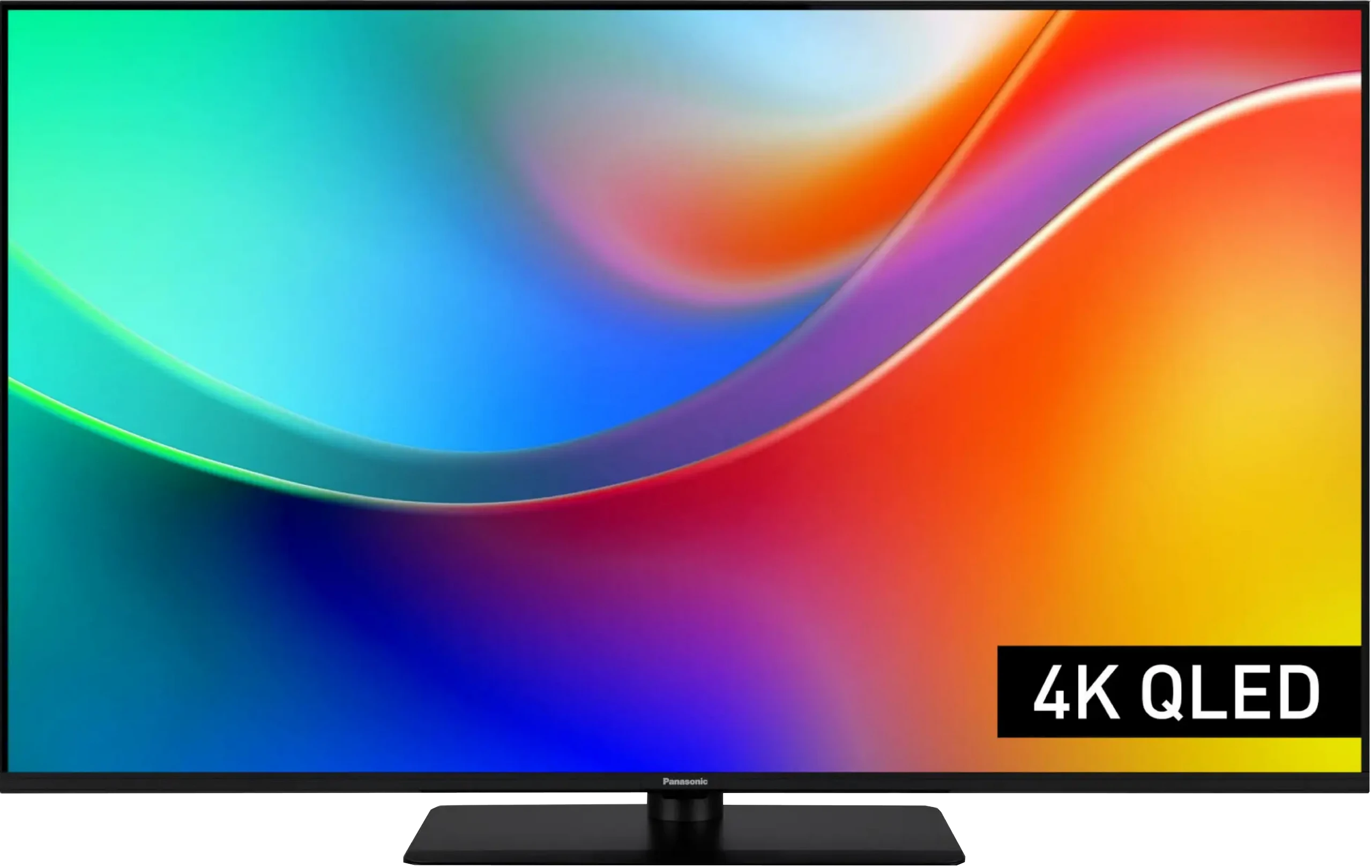
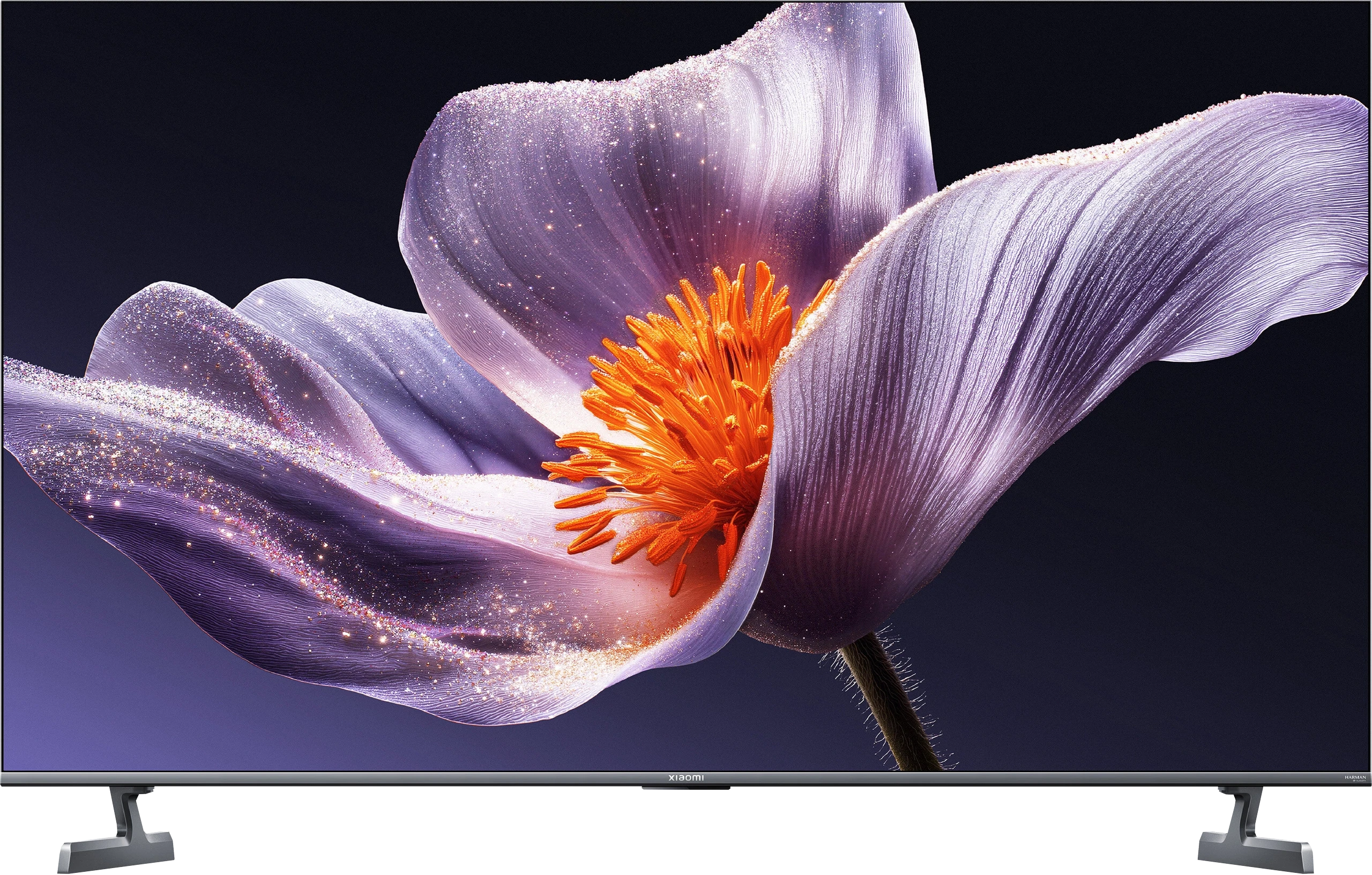
Panel type: LCD VA
Resolution: 3840x2160
System: Amazon FireTV
Model year: 2025
Complete the survey to find out the result

Resolution: 3840x2160
System: Google TV
Model year: 2025
Complete the survey to find out the result

Overall rating
6.1
7.2
Movies and series in UHD quality
5.5
6.7
Classic TV, YouTube
5.8
6.3
Sports broadcasts (TV and apps)
5.8
6.4
Gaming on console
7.7
7.7
TV as a computer monitor
8.6
8.6
Watching in bright light
4.2
7.4
Utility functions
6.8
7.2
Apps
7.6
9.6
Sound quality
5.8
7.1
Complete the survey to find out what fits your preferences
Advantages
VA matrix with high native contrast
High refresh rate of 120/144 Hz
Two HDMI 2.1 ports with support for ALLM, VRR, and Dolby Vision in gaming
Very low input lag
Fairly good colour gamut coverage thanks to the QLED filter
Support for multiple HDR formats including Dolby Vision and HDR10+
Sturdy central stand
Great compatibility with PC – full chroma 4:4:4, clear fonts
Good black and contrast (SDR)
Very high peak brightness (great for a bright lounge)
Complete package for gamers (144 Hz panel, HDMI 2.1, VRR)
Extremely low input lag in SDR mode (below 10 ms)
Surprisingly good, strong sound (branded by Harman Kardon)
Support for Dolby Atmos and DTS:X
Rich Google TV system (with AirPlay and Chromecast)
Proper compatibility with PC (clear fonts and 288Hz mode)
Excellent price-to-specification ratio
Disadvantages
Low brightness (below 270 nits) – no real HDR
HDR mode in games is poorly refined, with incorrect HGiG implementation
Poor multimedia file player
The FireTV system in Europe is poorly refined: there are micro stutters and awkward translations, lacking many apps
Average sound quality, lacking depth
Motion smoother won’t work
Local dimming algorithms practically don't work in HDR content
Useless Dolby Vision Gaming mode (input lag approx. 100 ms)
Poorly implemented HGiG mode
Strongly visible banding (colour stepping) in dark scenes
Very weak upscaling and digital image processing
Google TV system can "lag behind"
Our verdict
Is it worth buying the Xiaomi S Pro 2026? The answer to this question is quite complicated. Let's start with what is really great about this TV. First of all, the Xiaomi S Pro 2026 has an outstanding price-to-performance ratio. It features a Mini LED panel with very high brightness, which performs excellently in a sunlit living room. Additionally, it has a fast 144 Hz (or even 288 Hz) panel and a full gaming package: two HDMI 2.1 ports, support for VRR, and impressively low input lag (below 10 ms). If you mainly watch 'regular' content and play games, this is a fantastic screen. Even the built-in 30W speakers are surprisingly good and support Dolby Atmos. Unfortunately, there is also a second, very problematic side to this model. In short: the software. We have the impression that Xiaomi has given us great 'parts', but hasn't managed to make them work together properly. The biggest issue is the HDR mode – the main reason why people buy TVs today. For unknown reasons, the TV in HDR mode (HDR10, Dolby Vision) does not manage its dimming zones well. As a result, blacks that should be deep become grey or navy blue, like in a regular LCD TV. On top of that, there are other software issues such as the terrible implementation of HGiG or the fact that the Dolby Vision mode for gamers is unusable due to immense input lag (100 ms). Additionally, the TV's capability to process image digitally is very poor. So how can we summarise this in terms of price? In its price range, the Xiaomi S Pro 2026 crushes the competition in terms of specifications. Other TVs for this money are usually basic LCD models without dimming, and often only have a 60 Hz panel. The question then is: what is more important to you? If you're simply looking for a very bright and affordable TV for watching during the day and gaming, and you're willing to calibrate it – you will be very pleased with it. However, if you're looking for a TV to enjoy impressive HDR in movies and games straight out of the box, you will be terribly disappointed with this model. In that case, in our opinion, it's better to pay a bit more for a basic OLED TV or a more refined Mini-LED model from the competition.
TV appearance
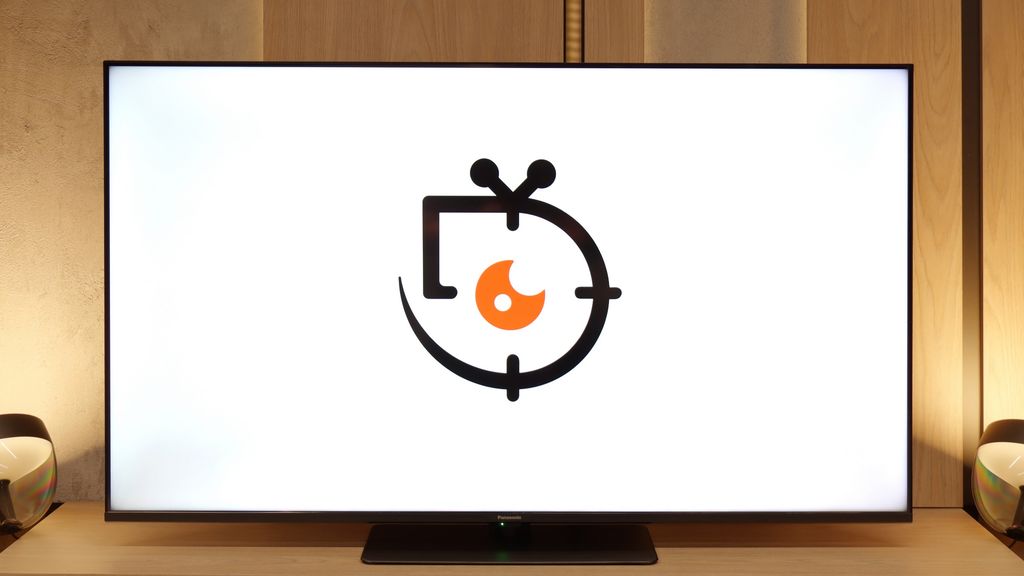





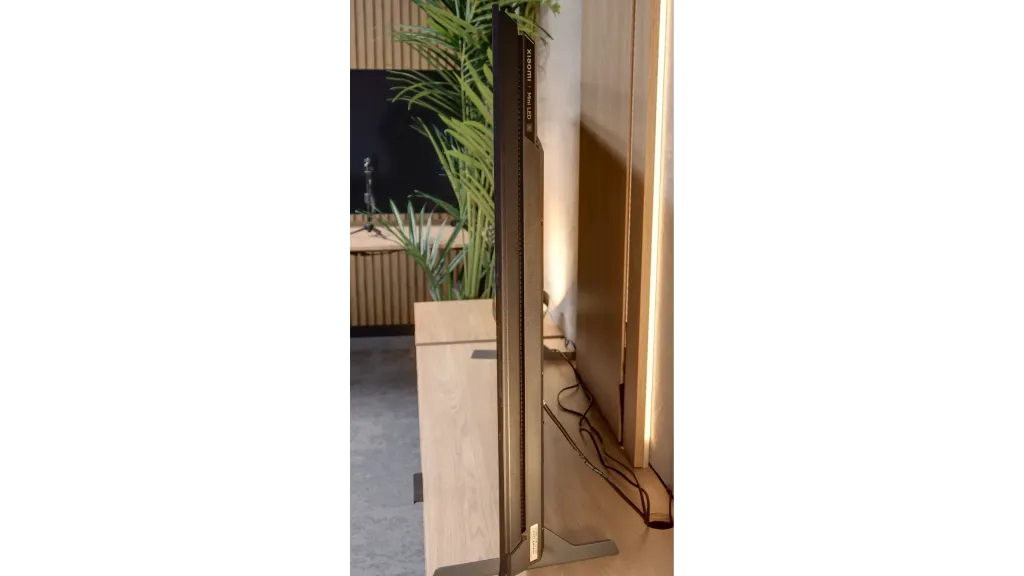

Contrast and black detail
5.3/10
7.4/10
Local dimming function: No
Local dimming function: Yes, number of zones: 532 (28 x 19)
Contrast:

Result
4,300:1

Result
4,250:1

Result
4,200:1

Result
4,400:1

Result
3,150:1

Result
1,001,650:1

Result
52,600:1

Result
17,900:1

Result
17,200:1

Result
10,150:1
Halo effect and black detail visibility:


W85B is Panasonic's entry-level LCD, so you shouldn't expect miracles in this category, but… the VA panel really does a great job here. Its biggest advantage is simply better contrast than in popular IPS panels – there, blacks often look like grey, but here you can actually see deeper tones. In the scenes we tested, the contrast held around 4000:1, which translates to roughly four times better performance than in IPS displays. Of course, there's no local dimming, so in challenging conditions, when the room gets really dark, the blacks can resemble navy more than absolute pitch black. This is the difference you can see when comparing it to OLEDs or Mini-LEDs. But for everyday viewing – series, matches, evening movies in the living room – this contrast is more than sufficient. The image has the right depth, and the W85B does not give the feeling of a “washed-out” television.
Let's get to the point, which is what’s most important in the Mini LED panel: blacks and contrast. The Xiaomi S Pro 2026 is built on a VA matrix, which right off the bat promises deep blacks. On top of that, it features Mini LED backlighting with a very large number of local dimming zones. In the 65-inch variant we tested, we counted as many as 532. That’s a solid figure that should provide precise control over the backlighting. It should be noted that this number is proportional to size – opting for the smaller 55-inch variant will have fewer zones, while larger models will have more.
So, how does the black level perform on the S Pro 2026? The answer is complex.
Overall, it’s really not bad, and we see a clear improvement compared to the problematic model from 2025. As you can see on our measurement charts, the results are occasionally spectacular. In the majority of the film scenes we measured in SDR (standard dynamic range), the contrast could easily be called very good and even comparable to constructions three times more expensive. Well, it could be... and this brings us to the paradox of this model. The problem is how the television manages zones in scenarios other than SDR. As soon as we feed the TV a higher-quality signal, such as an HDR series or Dolby Vision from streaming platforms (Netflix, HBO Max, or Disney+), something strange happens. We have an irresistible impression that the TV suddenly... forgets it was equipped with local dimming zones at all. As shown in our video below, black levels in such scenes resemble more dark gray or navy shades. To this is added a slight flickering of the entire screen. This is a level we would expect from televisions completely lacking local dimming systems. It seems that Xiaomi, over the course of a year, chose to fix one key issue from last year’s 2025 model. And they succeeded – there’s no more annoying “zone disco”, the image is stable. It’s just a shame that when consuming high-quality content (HDR), this entire advanced system becomes completely useless.
HDR effect quality
4.2/10
6.3/10
Luminance measurements in HDR:

Result
228 nit

Result
249 nit

Result
283 nit

Result
282 nit

Result
297 nit

Result
809 nit

Result
526 nit

Result
1033 nit

Result
469 nit

Result
718 nit
Scene from the movie “Pan” (about 2800 nits)


Scene from the movie “Billy Lynn” (about 1100 nits)


Static HDR10


Dynamic: Dolby Vision
Dynamic: Dolby Vision


HDR luminance chart:
Xiaomi S Pro 2026
HDR luminance
Panasonic W85
HDR luminance
Unfortunately, we don't have good news here. The Panasonic W85B is quite a dark television – its peak brightness doesn't exceed 300 nits, making it hard to talk about any real HDR effect. In practice, this means that scenes which can 'shine' and impress on other screens simply look like regular SDR with a slight colour boost here. Our measurements and film tests confirmed this – regardless of the content, the W85B won't draw anything more from HDR. So if someone is looking for a television specifically for HDR, it's better to look at other models. On a positive note, the W85B does quite well in terms of colours. It's a QLED television, so its colour gamut coverage is wide, and most films and series look natural, without a noticeable 'faded' effect. The colours are saturated, so in everyday viewing, there's no feeling that something is seriously off.
When it comes to HDR quality, the Xiaomi S Pro 2026 is undoubtedly a very bright television. On our synthetic measurement patterns, we were able to achieve peak brightness of around 1400 nits. This result is not only very good but quite spectacular, considering the price of this model. However, as we always say, our editorial team values measurements and the viewing experience of content that people watch on a daily basis – from movies to series. So let’s analyse how Xiaomi performs with film material. The result is, unfortunately, quite mixed. When very bright scenes appear on screen, the S Pro 2026 truly shows its full capabilities and can achieve a real 800-1000 nits on bright elements. Moreover, even smaller objects can "burn" the eyes – in scenes from the movie Sicario 2, small metallic parts of the helicopter were really vivid. The problem is – and here the story comes full circle, returning to our contrast assessment – that in such scenes, we can’t count on absolutely cinematic black. In our opinion, this compromise is too significant; the high visibility of details in bright sections should not come at the expense of such a substantial drop in blacks. And even though the HDR effect can create a stunning impression here, it’s important to remember that when very challenging, mixed scenes appear on screen, we may feel a slight disappointment. Precisely the one we mentioned in the previous paragraph regarding issues with dimming in HDR mode. As a consolation, it’s worth adding that the S Pro 2026 is equipped with an additional PFS filter (similar in function to a QLED layer), which effectively broadens the colour gamut coverage. As a result, measurements showed DCI-P3 coverage reaching 94%. This gives us confidence that in most colourful scenes, the image will look rich and properly saturated.
Factory color reproduction
4.2/10
4.1/10


Factory Mode
After calibration


Factory Mode
After calibration
Testing the Panasonic W85B, we obviously started with the Filmmaker mode, as it's the gold standard for watching content "the way the director intended." The problem is that this TV is quite far from those intentions. The biggest issue turned out to be an excess of red – both in SDR and HDR. The image often looked too warm because of this, and in some scenes, it was almost "on fire." Added to this is the issue of brightness management. When we looked at the gamma and EOTF charts, it was clear as day that in most scenes, the TV brightens the image more than it should. The effect was easy to predict. Details can get lost, leading to flattening and clipping across the entire screen. We obviously know how to fix this, but to be fair, it does require a lot of calibration work. Out of the box, the W85B doesn't produce an image close to reference quality – it's more of a TV that, without professional adjustments, will always interpret colours and brightness a bit "in its own way." Unfortunately, this is to the detriment of the viewer.
Of course, all our measurements were conducted in "Film" mode, which is typically the best and most faithful choice we get straight after taking the TV out of the box. And to put it bluntly: while this is the best mode, it is still very far from perfect. Above all, the TV has a clear tendency to give the picture a cool, blueish tint – this is due to poorly set colour balance. Additionally, there is the issue of how the S Pro 2026 manages its brightness straight out of the box, which results in an over-saturated image. These two flaws contribute to really significant colourimetric errors (Delta E). In HDR content, they could double exceed our expected error scale of "10" (i.e. reaching values close to 20). Just to remind you – the threshold of perceivable error by the human eye is a Delta E value of around 3. Results at the level of 20 mean that the image significantly deviates from what the director intended.
Color reproduction after calibration
6.9/10
7.2/10




Fortunately, calibration made a significant difference for the Panasonic W85B, especially for SDR content. Here, the improvement was quite evident – we managed to even out the white balance and reasonably tame the TV's tendency to overly brighten the entire image. The picture became more coherent and the colours gained the naturalness that was lacking in the factory settings. Admittedly, the results from the Color Checker are not perfect, as the W85B has noticeable issues with green saturation, but overall, we rate the post-calibration effect in SDR quite positively. The situation with HDR is a bit different. Here too, we managed to reduce the tendency to warm up the entire scene, so the image performed definitely better than in the factory settings. However, there is still the same problem we mentioned earlier – the TV interprets the image too strongly "in its own way" and brightens the whole screen. And the lack of local dimming only exacerbates this effect. In summary, briefly, in SDR content, the W85B performs really well after calibration and is perfectly suitable for everyday viewing. However, in HDR, even after adjustments, it is still difficult to unambiguously recommend it for more serious viewing.
So how does the S Pro 2026 perform after our calibration process? We must admit that after calibration, the TV becomes a really enjoyable device for watching everyday content. As you can see in the charts, in HD (SDR) material, both white balance and gamma values have been brought to nearly perfection. Most importantly, colourimetric errors have become practically invisible to the human eye. In this scenario, the S Pro 2026 is simply a great TV that, after professional calibration, can provide a lot of joy from viewing. However, it is worth noting clearly – our efforts did little to help in 4K HDR mode. Despite the calibration, the TV still interprets the image quite strongly in its "own way," which is clearly evident in the measurement of the EOTF curve (brightness tracking). It's a bit of a shame because it shows that the problem lies not with the panel itself, but with the software. Poorly refined image management algorithms in HDR content can, unfortunately, rule this TV out for many more discerning users.
Smoothness of tonal transitions
9.1/10
6.9/10












Here we can calmly praise the Panasonic W85B. The TV handles colour blending and tonal transitions remarkably well. Gradients appear smooth, without visible banding or artificial contours. As a result, the image gains a sense of naturalness, and sequences with a lot of subtle shades – like the sky or blurred backgrounds – look exceptionally good for this class of equipment.
Now, let’s move on to the analysis of tonal transitions, which refers to the fluidity with which the television can render transitions between closely related shades. In the case of the Xiaomi S Pro 2026, the image that emerges is extremely dualistic. On one hand, we have bright gradations. When scenes with a blue sky or other smooth transitions appear in the bright parts of the image, the S Pro 2026 handles them excellently. They look perfectly smooth, without any visible artifacts.
Unfortunately, the situation changes dramatically as soon as dark scenes take over the screen. To put it bluntly – they look really poor. Instead of a smooth tonal transition in the darkness, the screen clearly shows colour banding and unsightly "stepping" of gradients. This is very noticeable in darker films or games and can effectively ruin the viewing experience.
Image scaling and smoothness of tonal transitions
6/10
4.5/10
Smooth transition function

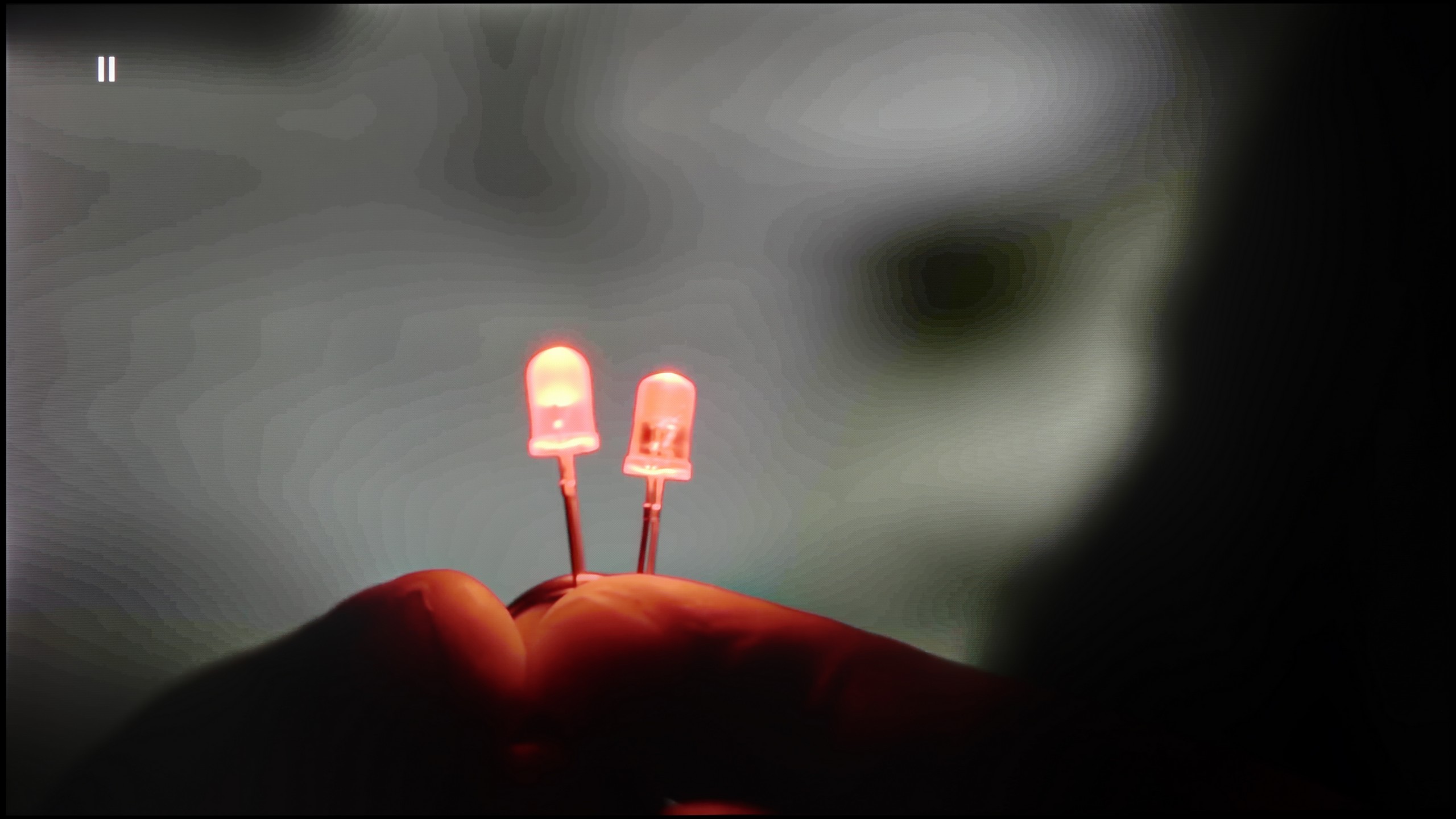
Image without overscan on the SD signal


With native SDR content, the Panasonic W85B performs very well – tonal transitions are smooth and natural, without artificial bands or clear outlines. However, the situation is worse with lower resolution materials. This is where the TV has the biggest problem with "beautifying" the image. The lack of any menu option to improve gradation means that with older films or materials from YouTube, one can sometimes notice slight issues with colour blending.
Fortunately, upscaling, or enhancing the quality of lower resolution content, performs much better. This is definitely a strong point of this model – the image is scaled cleanly and in detail, and the TV handles this better than one might expect from such an inexpensive setup. This is thanks to the HCX processor, which Panasonic has been developing for years, and it shows that even in the lower series, it can do a good job.
Let's start with the issue we raised in the previous paragraph: can a TV even fix the problem of terrible tonal transitions in dark scenes? Theoretically yes – in the menu, we find a feature with the promising name "Colour Contour Removal." Well, "theoretically." Unfortunately, in practice, this setting – regardless of which of the three power levels is chosen – yielded absolutely no real results. So we are dealing with a feature that practically only exists in the menu. Moving on to the quality of upscaling (scaling from a lower resolution to 4K), unfortunately, we have more bad news for you. The S Pro 2026 handles this task very poorly. Interestingly, the phenomenon of "overscan" (slight image cropping) is not a major issue here. The problem is that the TV simply shows a very raw, unprocessed image. Its attempt to boost the signal to a higher resolution looks simply dull and lacks any "intelligent" enhancement. There's no denying it – the entire digital image processing is the true Achilles' heel of this model.
Blur and motion smoothness
6.5/10
7.5/10
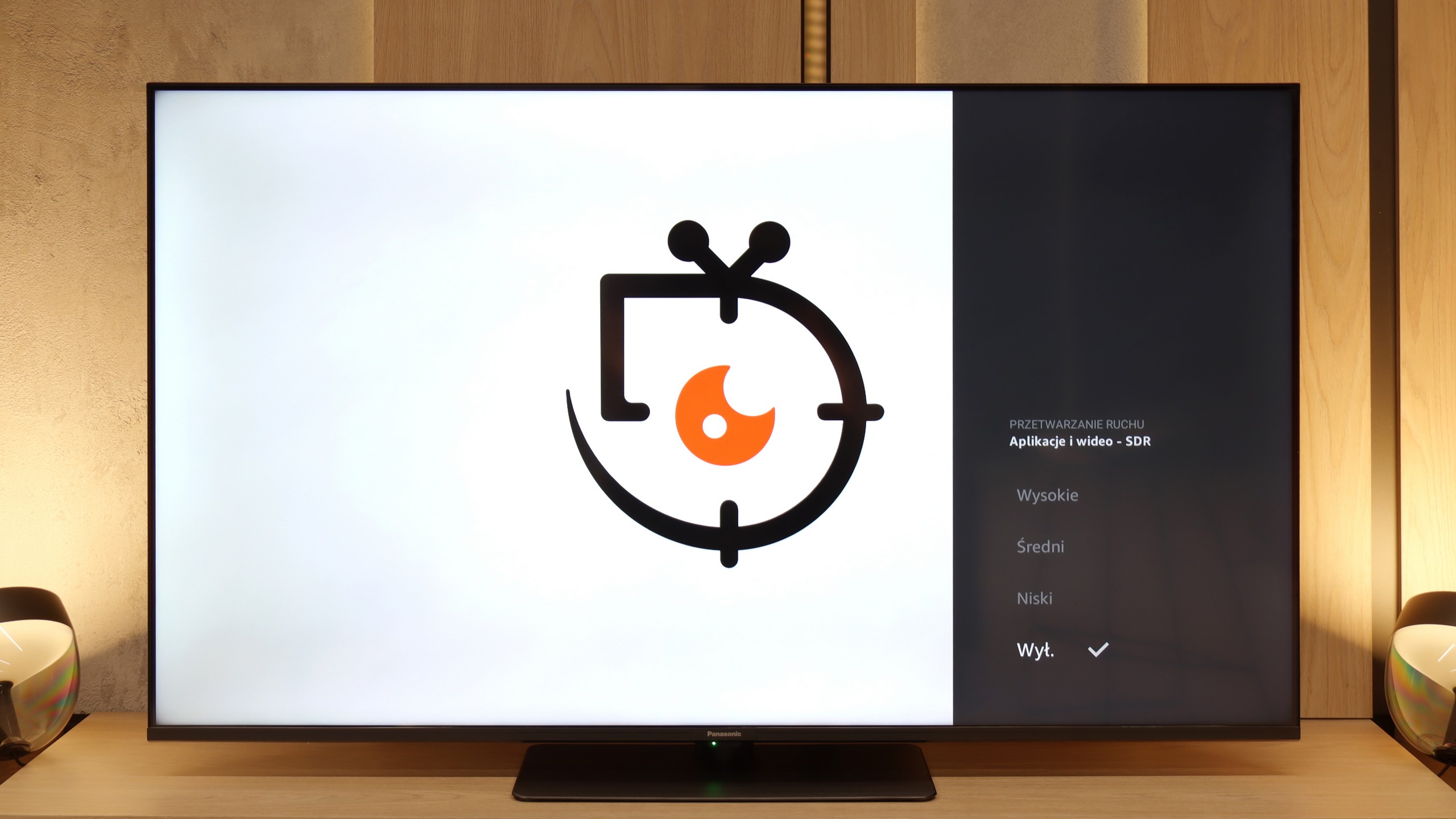
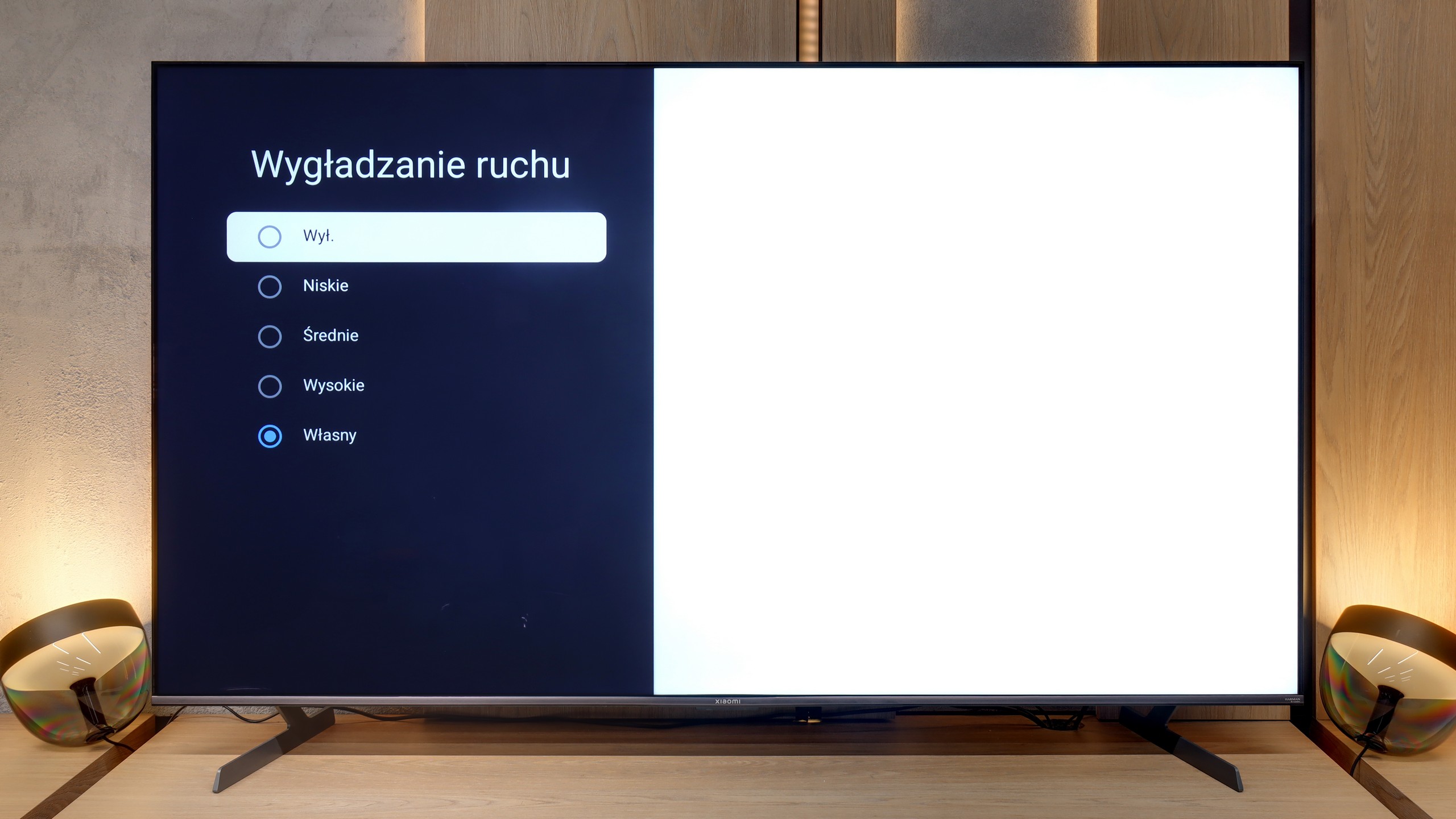
Blur (native resolution, maximum refresh rate):






Smużenie (4K@144Hz):



Smużenie (1080p@288Hz):



At first glance, everything looks good – the Panasonic W85B has a 120 Hz panel and even a 144 Hz mode, so it seems like it should handle smooth motion really well. The problem starts when we delve into the settings. The options for improving fluidity are supposedly present in the menu, but in practice… they don't change anything. No matter what we choose, the image looks the same. On top of that, there’s a lack of BFI, or black frame insertion, which in many TVs helps sharpen motion. And suddenly, it turns out that despite the strong panel, the W85B doesn’t give us any real tools to adjust that motion to our needs. It’s only good when the source itself operates at a higher frequency – for example, games at 120 Hz. But when it comes to movies or sports, we just have to accept what the TV shows us because there’s nothing more that can be done about it.
On paper, the specifications of the S Pro 2026 look impressive. The television is equipped with a native 144 Hz panel, capable of displaying images at up to 288 Hz in a dedicated gaming mode. These are incredible results, but what we were most interested in, in the context of everyday use, was how the TV handles motion blur and how the picture looks at 120 Hz. After all, this is the frequency used today by consoles such as the PlayStation 5, Xbox Series X/S, and it is desirable for sports fans. Generally, the panel "holds up". The matrix is quick enough to meet these challenges, and objects displayed at a native smoothness of 120 Hz are rendered correctly. When it comes to software, the TV is equipped with motion smoothing technology, but with a key caveat – it only works for input signals up to 60 Hz. This means it's mainly suitable for traditional TV, movies, and series. With it, we can adjust the smoothness of the picture to our own preferences – ranging from a very smooth, "theatrical" approach, to setting the slider at "zero" and maintaining a fully cinematic character.
Console compatibility and gaming features
8.5/10
8.2/10
- ALLM
- VRR
- VRR range48 - 144Hz48 - 144Hz
- Dolby Vision Game Mode
Yes, high input lag
- Correct implementation of HGIG
- 1080p@120Hz
- 1440p@120Hz
- 4K@120Hz
- Game bar
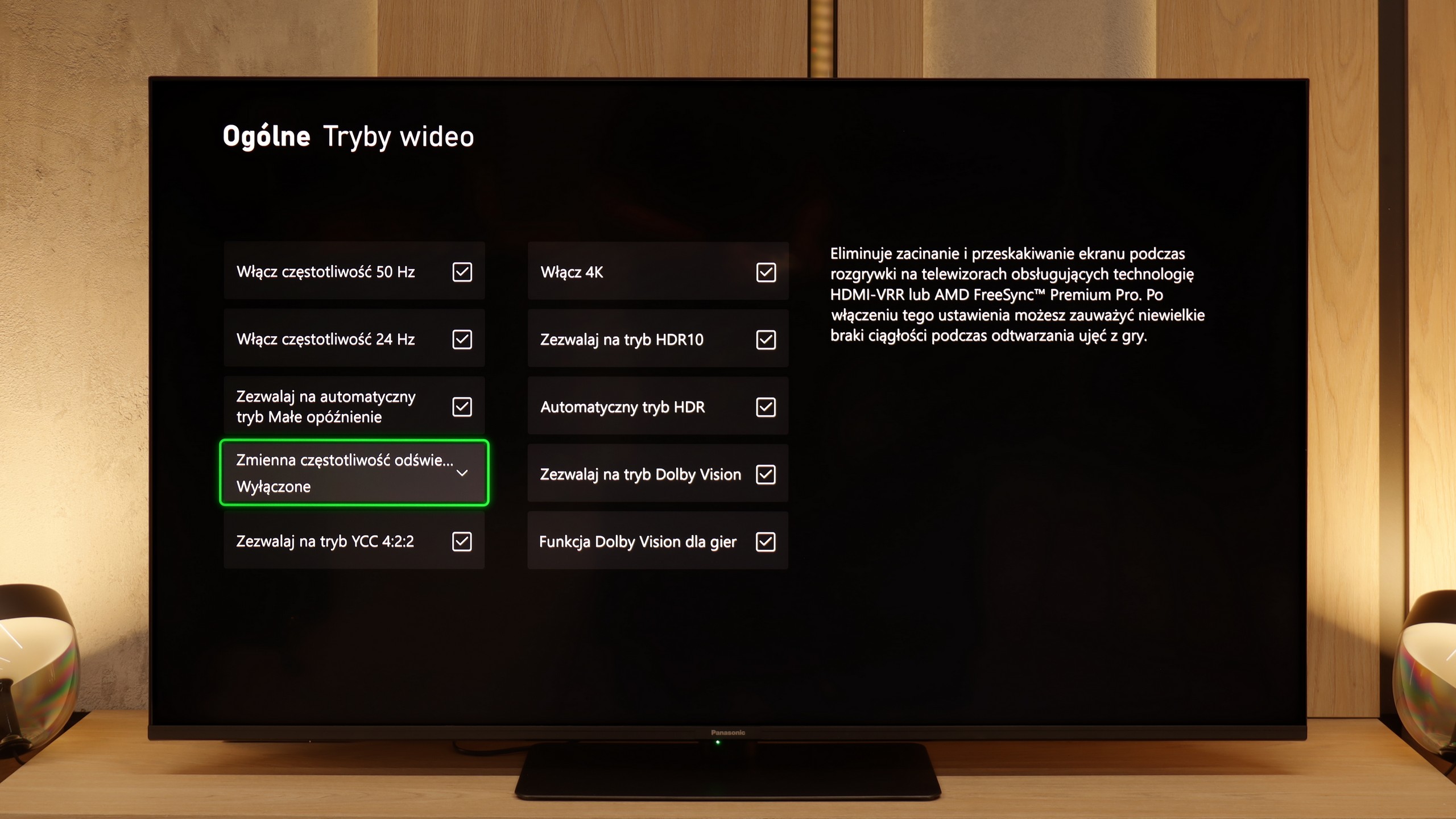
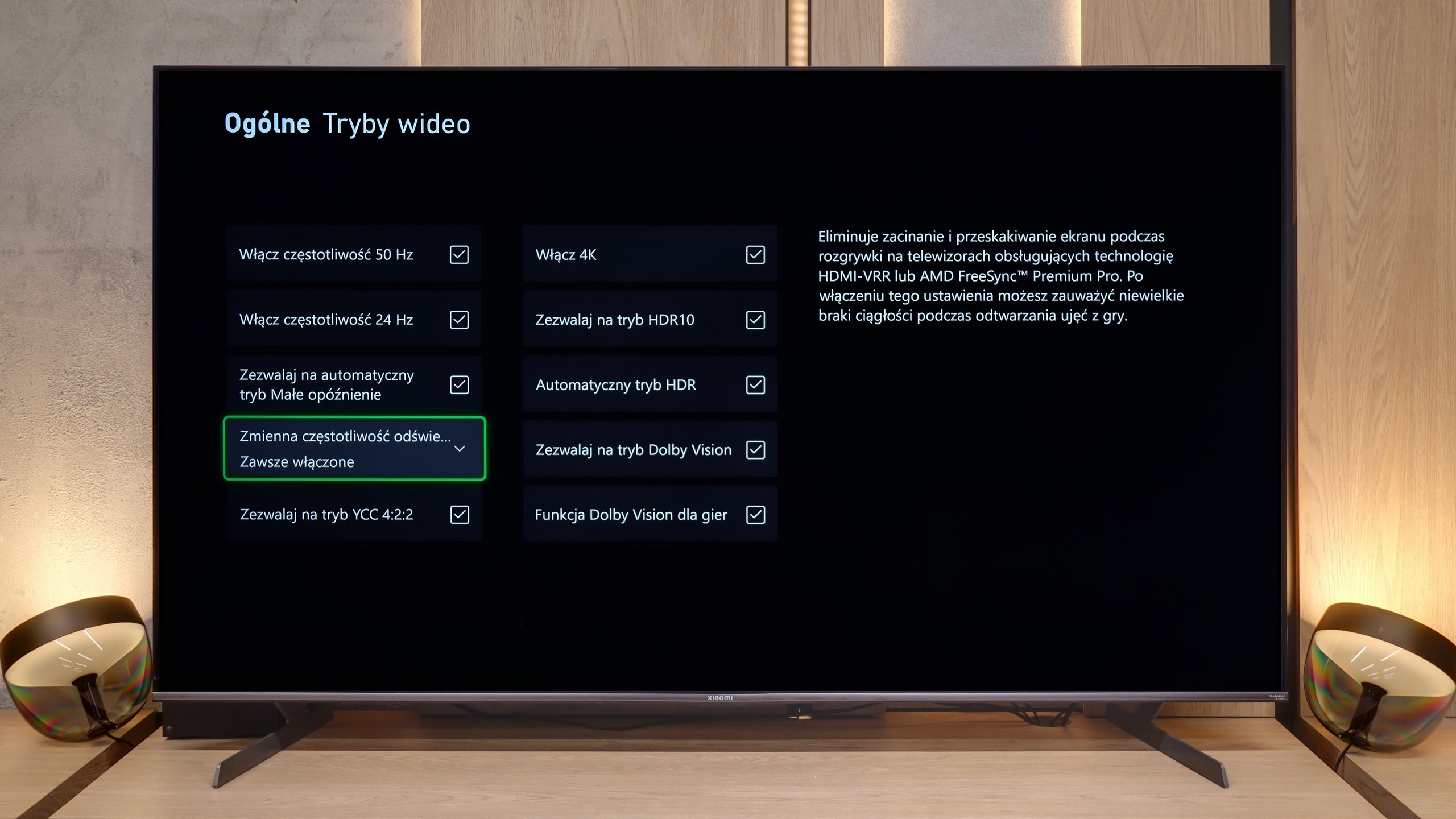
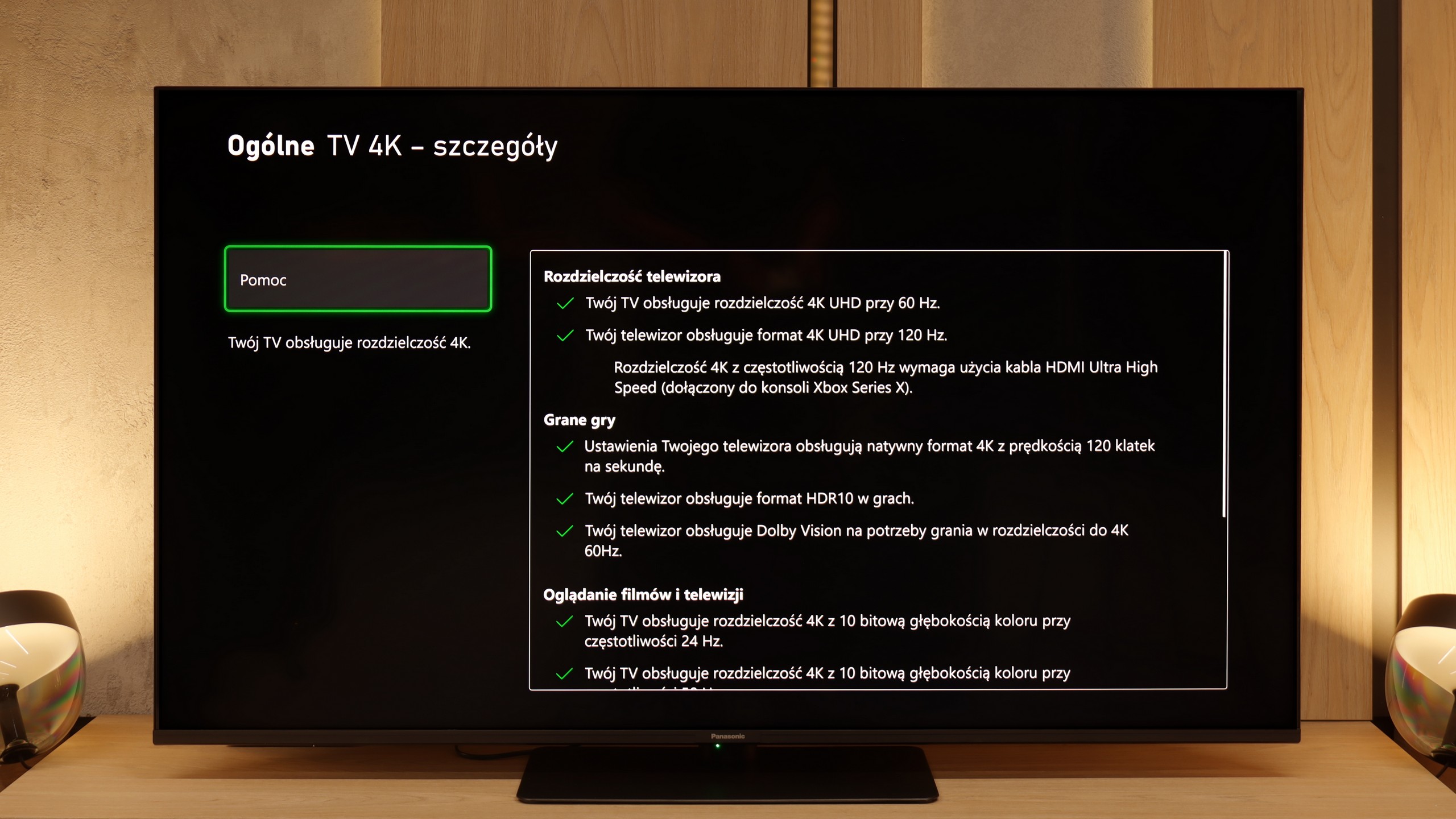
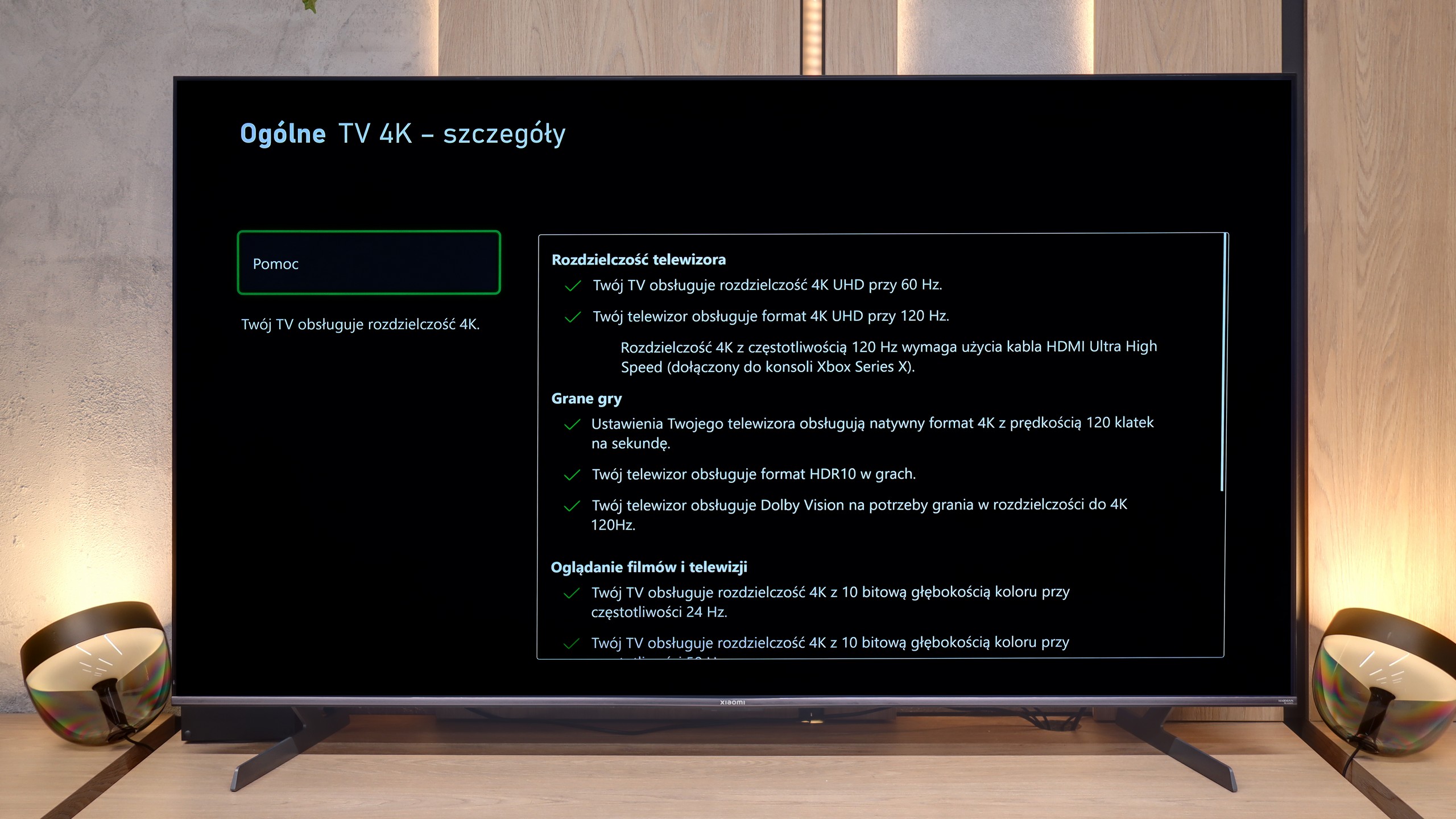
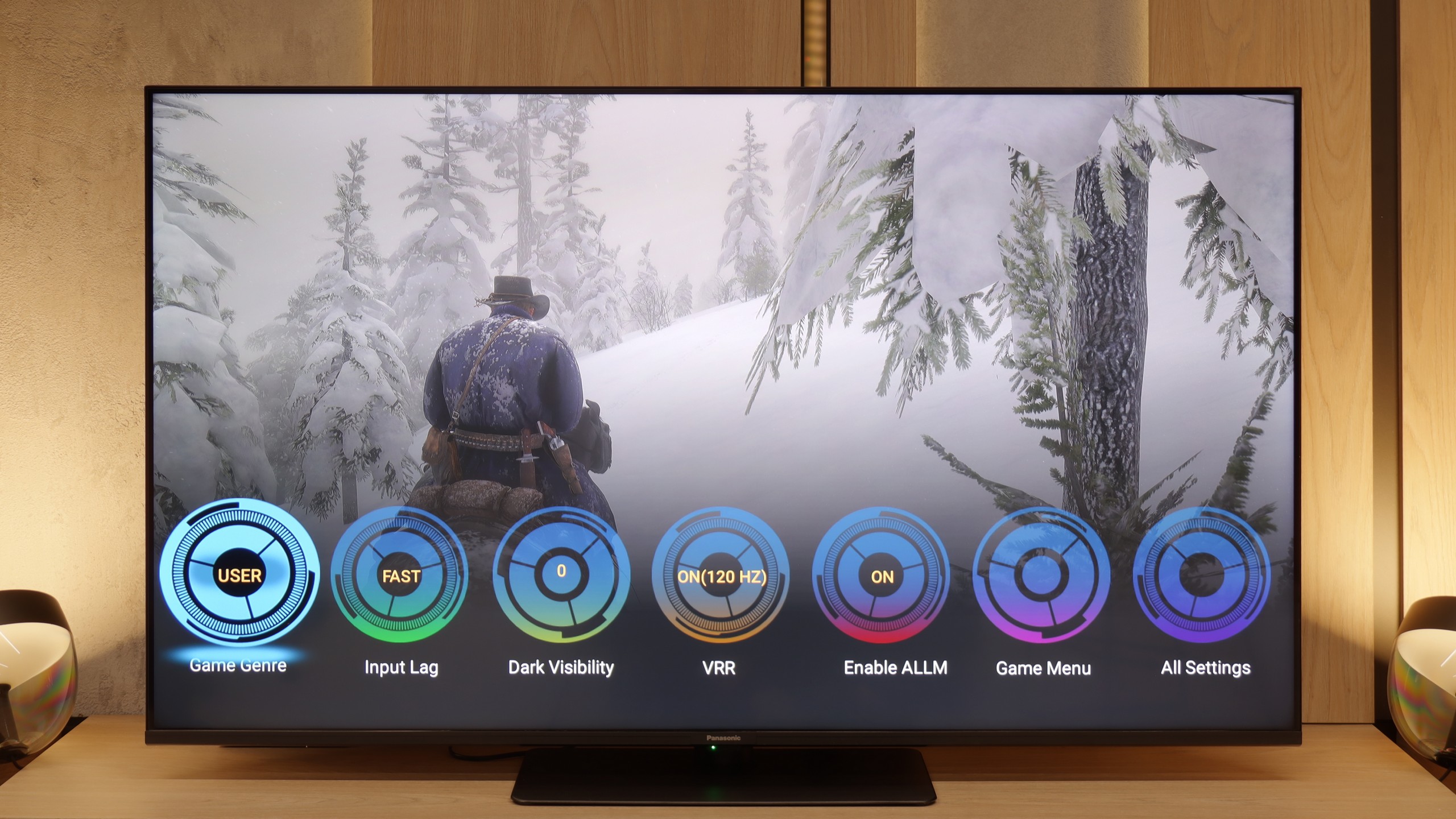


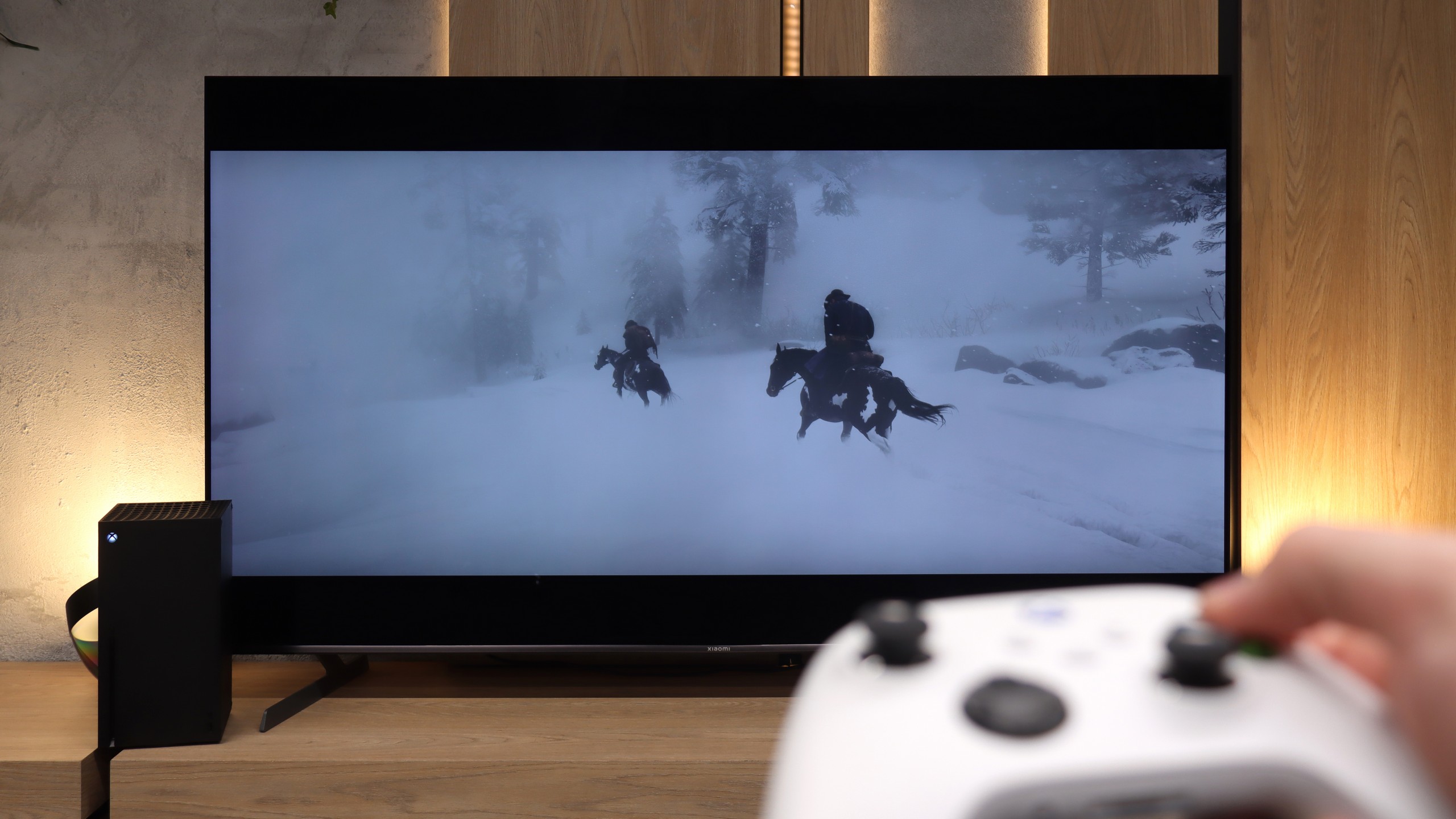
On paper, the Panasonic W85B looks really solid. It has two full HDMI 2.1 ports, support for ALLM, variable refresh rates, Dolby Vision in games, and of course, a high refresh rate for the panel itself. Additionally, there's the characteristic Panasonic game bar, which allows you to view key parameters with a single click and quickly change them if needed. It sounds great, but the problem arises when we enable HDR. Here, the W85B really struggles because the implementation of HGiG is practically nonexistent – the TV poorly manages brightness, and instead of faithful images, we get scenes that are too bright, sometimes even blown out. The solution? The simplest one – turn off HDR in the console settings and keep everything in SDR. And here it gets really interesting, because in this scenario, the W85B shows its better side. Low input lag, high smoothness thanks to 120 Hz – all of this makes gaming look phenomenal. Yes, HDR can be skipped, but if responsiveness and smooth gameplay are the priorities, the W85B provides plenty of fun.
For gamers, the Xiaomi S Pro 2026 is on paper an almost perfect proposition. It has been equipped with two HDMI 2.1 ports, which allow us to unlock (although these options are somewhat hidden in the menu) the full suite of features: ALLM, VRR, and, crucially, the ability to operate in 4K at 144 Hz. This last feature should particularly please owners of powerful PCs. The TV also has something resembling a gamer panel – and while it’s hard to call it a full-fledged "Gamebar," it does its job by displaying key information. It’s just a shame that in its default form, it covers a relatively large part of the screen.
The biggest problem we have with this model, however, concerns how the S Pro 2026 handles games in HDR mode. To put it bluntly: it doesn’t handle it well. Due to the poorly implemented HGiG feature (the HDR tone mapping standard for games), during the initial HDR calibration on the console, it’s very easy to "blow out" the image. If someone is unaware of this software flaw and follows the on-screen instructions, they will simply set the picture incorrectly, with burnt-out details in bright areas. Another significant issue is the Dolby Vision mode for games. While it works, it generates such a high input lag that it becomes noticeable in dynamic titles. (You can check all our lag measurements in the paragraph below). In summary: Generally, this is a really very good screen for gamers, but with one small caveat. We would rather avoid HDR mode on it – unless we decide to manually set the brightness slider on the console "by eye," completely ignoring the tips from the console's pictogram.
Input lag
9.8/10
8.5/10
SDR
HDR
Dolby Vision
There’s really nothing to worry about here. The Panasonic W85B reacts instantly to our movements, and the values measured in tests can easily compete with gaming monitors. At a 120 Hz signal, the input lag is around 8–10 ms, and at 60 Hz it hovers around 17–20 ms. In practice, this means one thing – no delays, no frustration! You press the button, and the action happens immediately on the screen.
We’re moving on to one of the most important measurements for gamers, which is signal delay (input lag). Overall, the Xiaomi S Pro 2026 performs excellently here. Generally, in game mode, the lag is very low. With 120 Hz content (from consoles or PC), we easily achieved results below 10 ms. These are truly outstanding results and, in practice, absolutely unnoticeable for most people, even those who are very sensitive. Unfortunately, there is one "but," which constitutes the biggest drawback of this model for gaming. We're talking about Dolby Vision Gaming mode. When this mode is activated, the input lag rises to an astronomical level of about 100 ms. At such a value, the delay between our movements on the controller (we tested on an Xbox console) and what is displayed on the screen becomes really very large and annoying. Therefore, our recommendation is simple: we absolutely do not recommend using Dolby Vision Gaming mode on this television.
Compatibility with PC
8.6/10
8.6/10
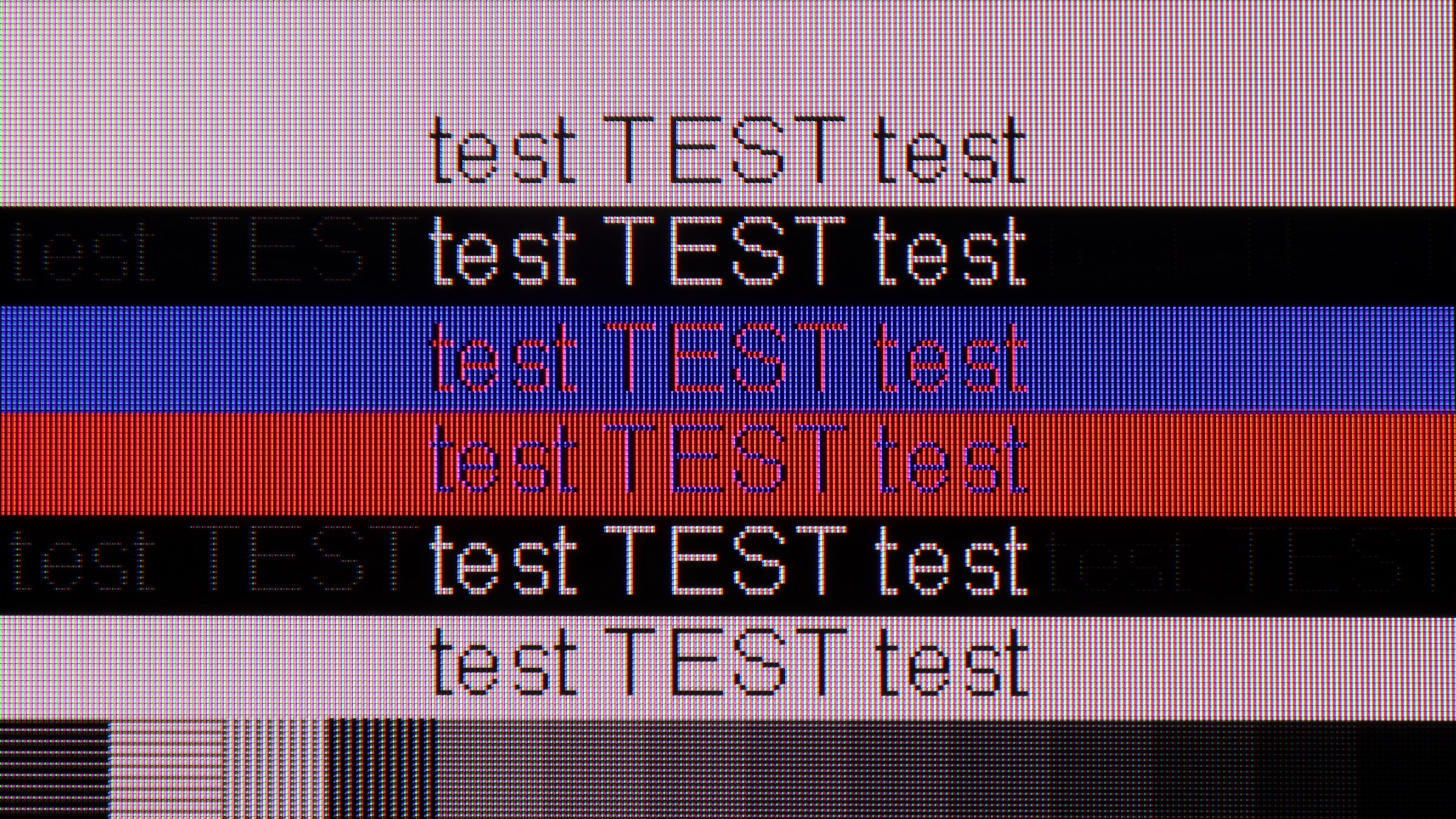
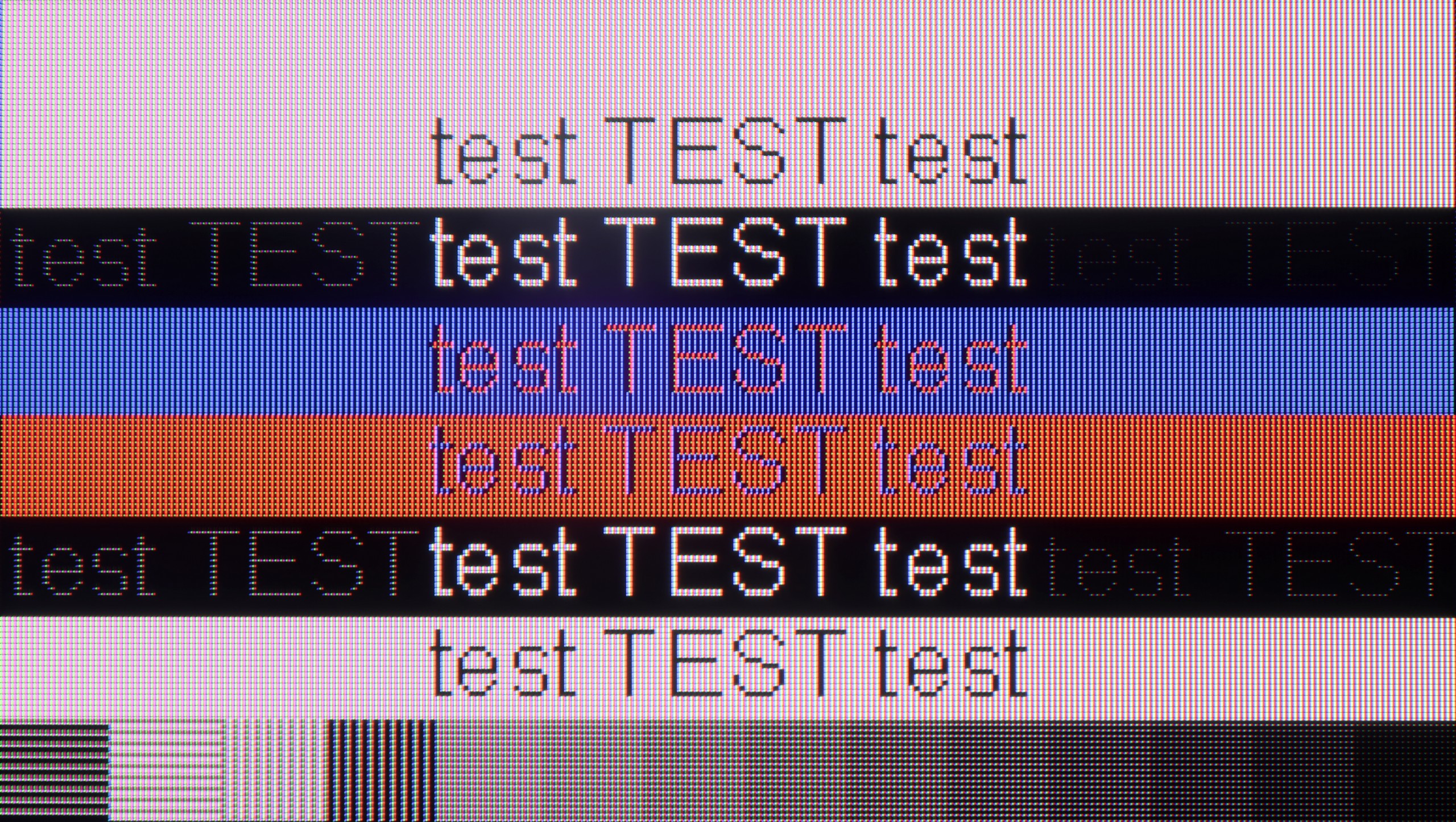
The Panasonic W85B performs surprisingly well as a computer monitor. It is perfect for office work – the fonts are sharp and very readable thanks to full 4:4:4 chroma support, so writing, browsing the web, or working on spreadsheets is a breeze. But the real "fun" starts when gaming. The TV handles up to 144 Hz refresh rates for PC effortlessly, and it supports popular image synchronisation technologies like NVIDIA G-Sync and AMD FreeSync. This means we don't have to worry about screen tearing or micro-stuttering – gameplay is smooth and looks simply fantastic.
Generally, when it comes to gaming, the S Pro 2026 is a great screen for PC owners. It offers a refresh rate of up to 288 Hz at Full HD resolution or a full 144 Hz at 4K. All of this, supported by technologies like AMD FreeSync and G-Sync, really means a lot for very demanding gamers. And what about "desktop" work? Here we have good news. Although the displayed font may not be perfectly sharp (like on a dedicated PC monitor with an IPS panel), it is presented in a really pleasant and readable way. This is due to the correct implementation of Chroma 4:4:4 sampling, which ensures that the text is clear and there are no issues with colour fringing.
Viewing angles
3.2/10
3.7/10
Here you can see the biggest price we pay for the high quality of the VA matrix contrast. The W85B, like most TVs with this type of panel, doesn't perform well when viewed at wider angles. Colours lose intensity and the image begins to fade as soon as you move away from the screen's axis. This is not a flaw of Panasonic itself, but rather a characteristic of VA technology – great contrast in exchange for poorer viewing angles. So, if you plan to watch movies with a larger group and often sit "off to the side", it's something to keep in mind.
As for a TV equipped with a VA panel, we must admit that the drop in brightness when deviating from the screen's axis is relatively minor on the Xiaomi S Pro 2026. However, it is important to remember the second, crucial aspect – colour saturation degrades significantly at an angle. This is typical behaviour for TVs with VA panels that lack additional coatings to widen viewing angles. Is this a disadvantage of this TV? Not really. It's simply a characteristic, the price we have to pay for the key benefits of a VA panel in terms of its high native contrast.
Daytime performance
4.2/10
7.4/10
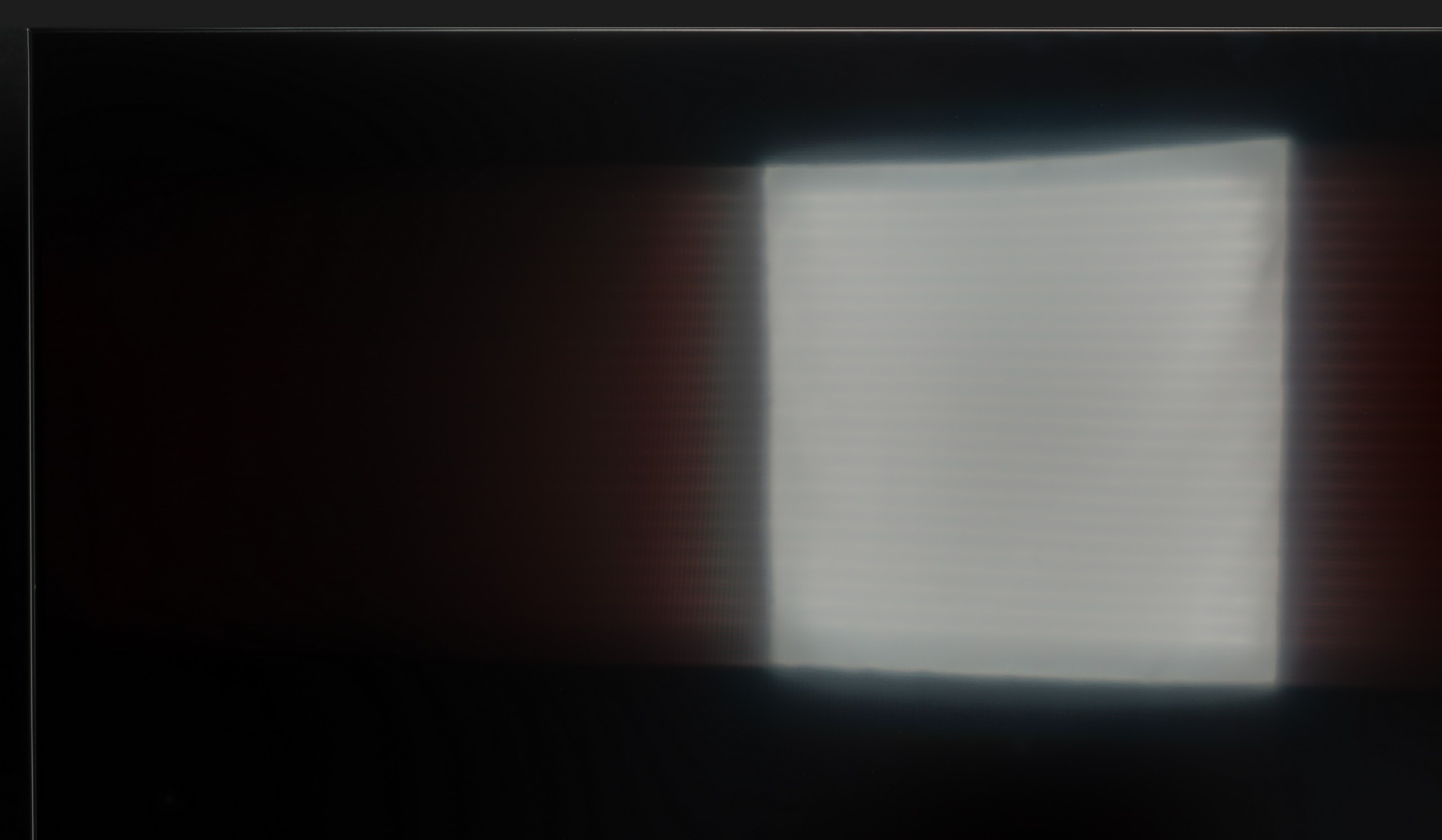
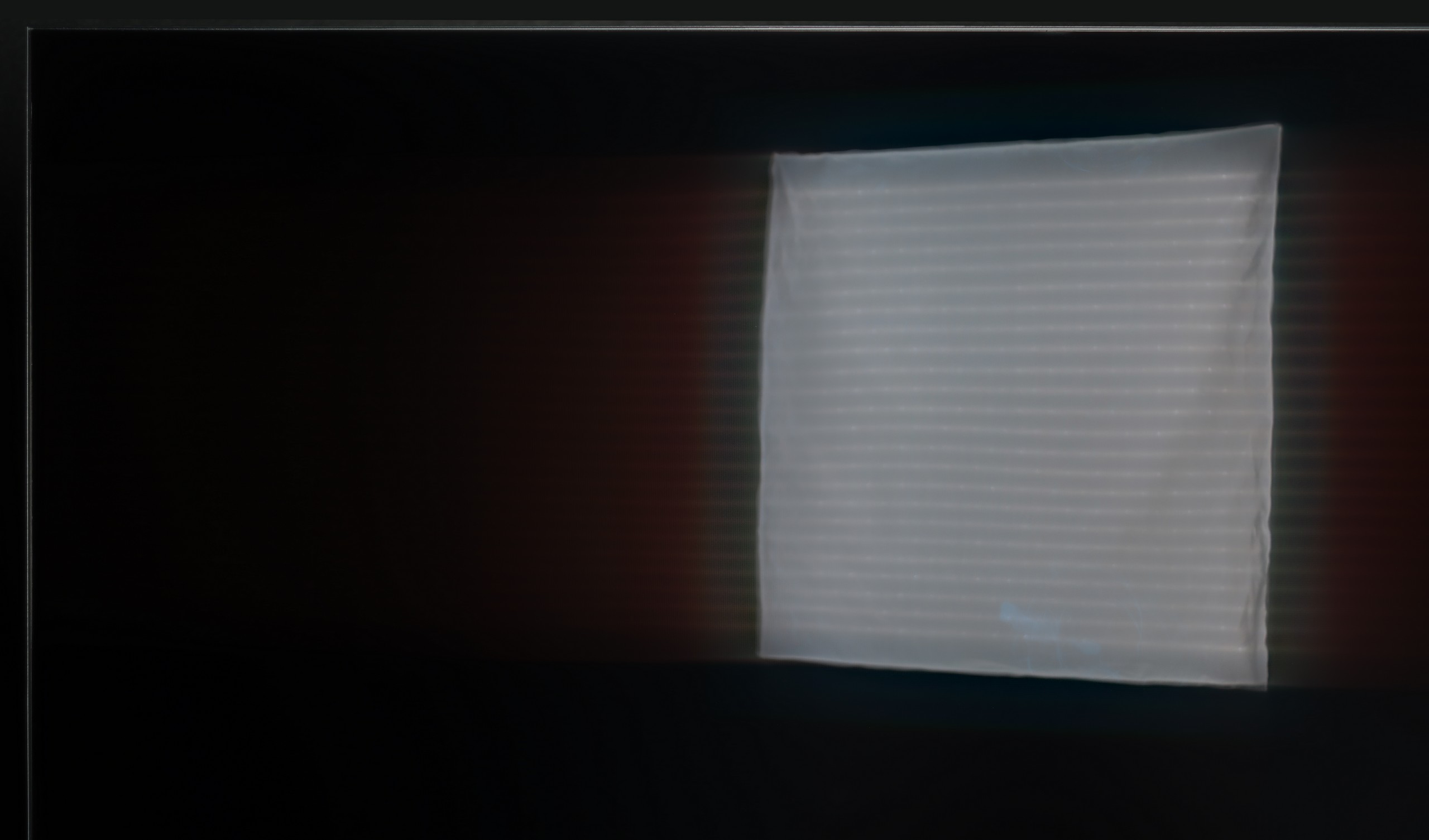


Panel brightness
Average luminance SDR
Xiaomi S Pro 2026: 771 cd/m2
Panasonic W85: 263 cd/m2
The Panasonic W85B features a satin-finished panel that does quite well in reducing reflections and maintaining colours even in bright light coming from windows or lamps. There’s no ‘mirror’ effect here, so in a typical lounge during the day, watching TV is comfortable. However, the problem arises when you’re in really bright rooms – the TV doesn’t have high brightness, so it won’t cut through very strong sunlight. It’s simply a screen that performs best in controlled conditions.
Due to its extremely high peak brightness, the Xiaomi S Pro 2026 performs really well in bright, sunlit rooms. In most scenarios, it's able to "break through" even very strong lighting in the room. However, it's worth noting that the matrix used here does a fairly average job of suppressing reflections. This means that in darker areas of the image, or when the TV is displaying a dark scene, direct reflections (e.g., window or lamp reflections) can be irritating. Nevertheless, the S Pro 2026, as a TV for a bright living room, excels really well thanks to its powerful brightness.
Panel details
Subpixel Structure:
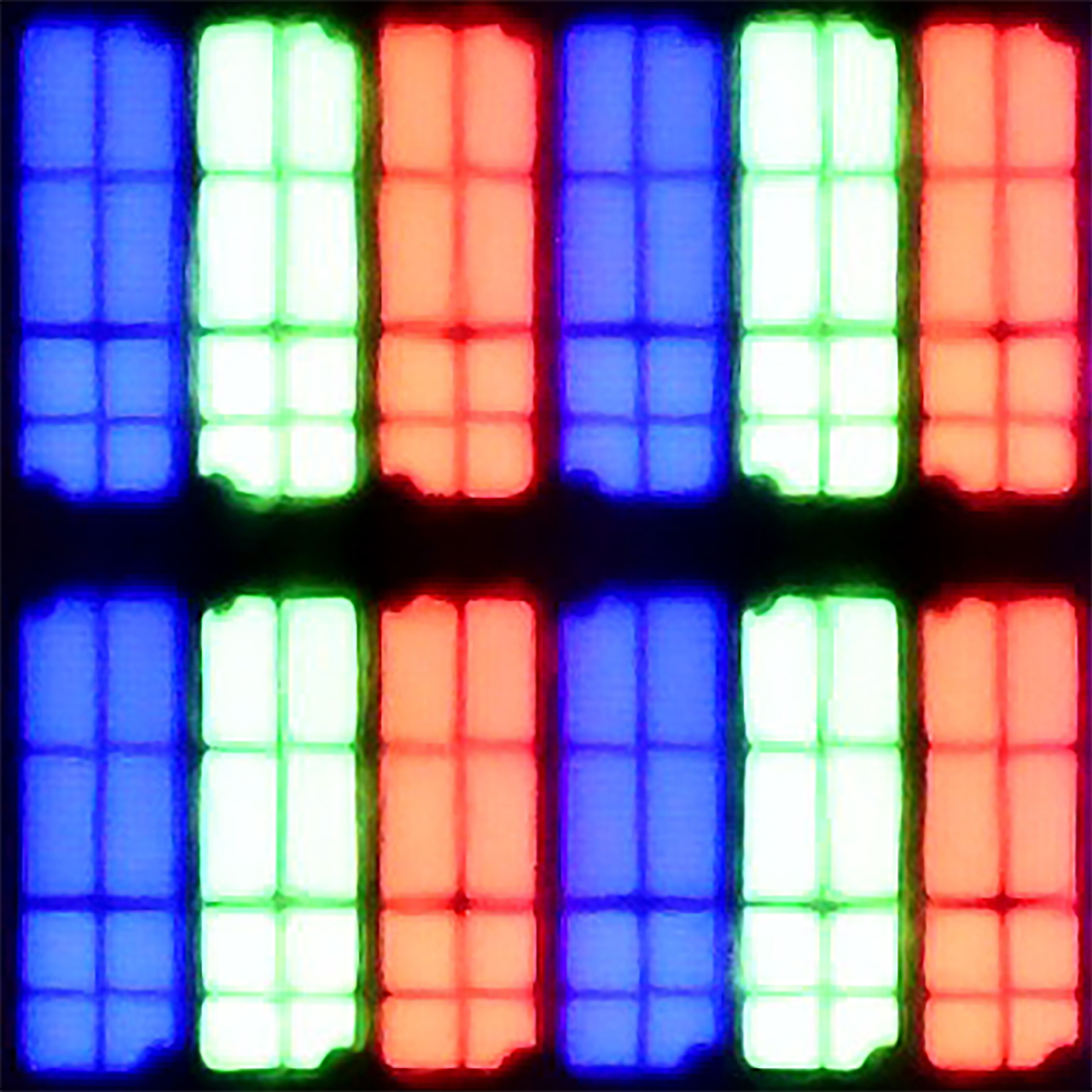
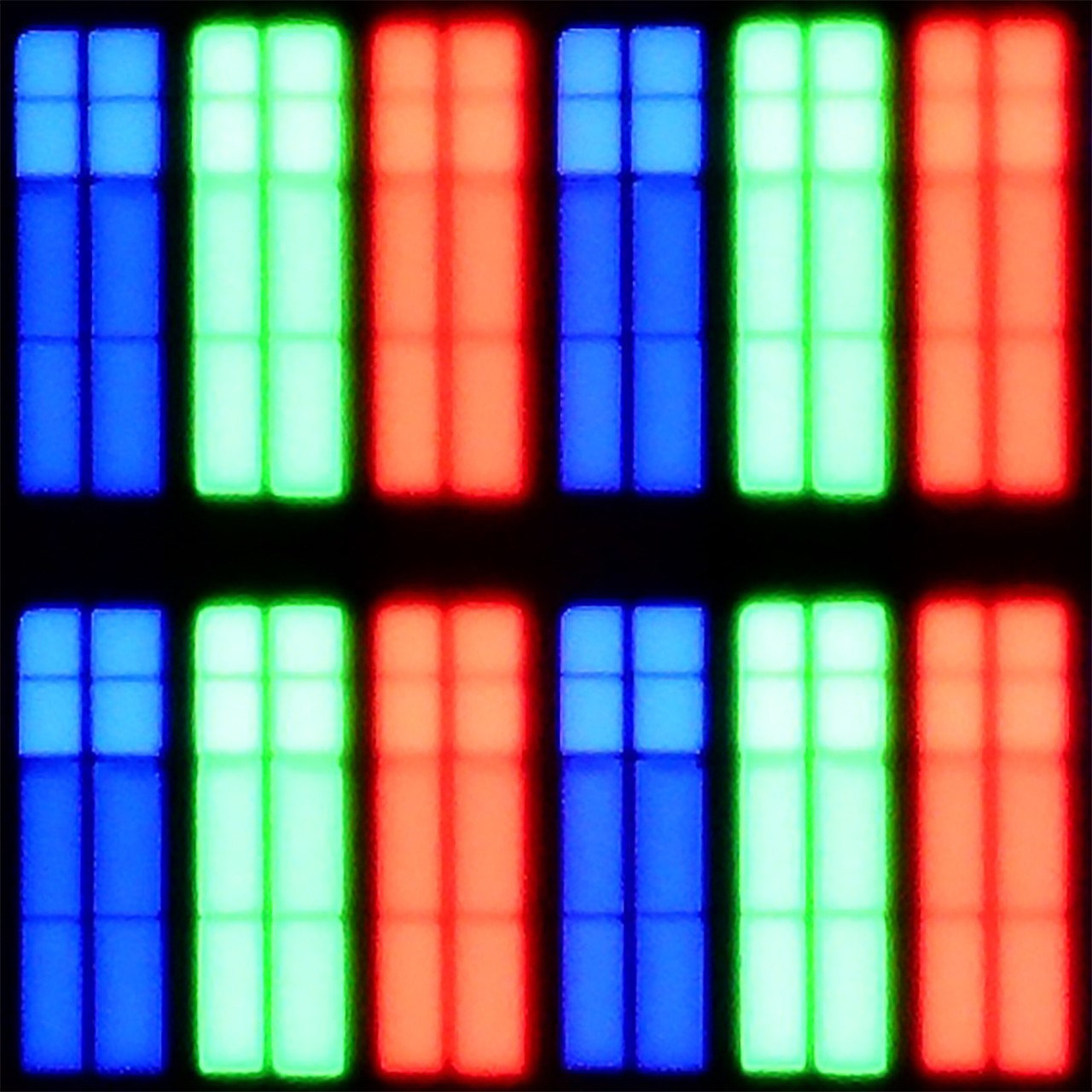
Panel uniformity and thermal imaging:


Panasonic W85
Xiaomi S Pro 2026
TV features
6.8/10
7.2/10
- HDMI inputs1 x HDMI 2.0, 2 x HDMI 2.1 48Gbps1 x HDMI 2.0, 2 x HDMI 2.1 48Gbps
- OutputsToslink (Optical audio), eARC (HDMI), ARC (HDMI), Mini-Jack (Headphones)Toslink (Optical audio), eARC (HDMI), ARC (HDMI), Mini-Jack (Headphones)
- Network InterfacesWi-Fi 2.4GHz, Wi-Fi 5GHz, Ethernet (LAN) 100MbpsWi-Fi 2.4GHz, Wi-Fi 5GHz, Ethernet (LAN) 100Mbps
- TV receptionDVB-T, DVB-T2, DVB-S, DVB-S2DVB-T, DVB-T2, DVB-S, DVB-S2, DVB-C
Classic features:
- Recording to USB (terrestrial TV)
- Recording programming
- Picture in Picture (PiP)
- RF remote control (no need to aim at the screen)
- Backlit remote control
- Teletext
- Audio only mode
- Bluetooth headphones support
- Simultaneous Bluetooth headphones & TV audio
Smart features:
- AirPlay
- Screen mirroring (Windows Miracast)
- Voice search
- Voice search in native language
- Ability to connect a keyboard and mouse


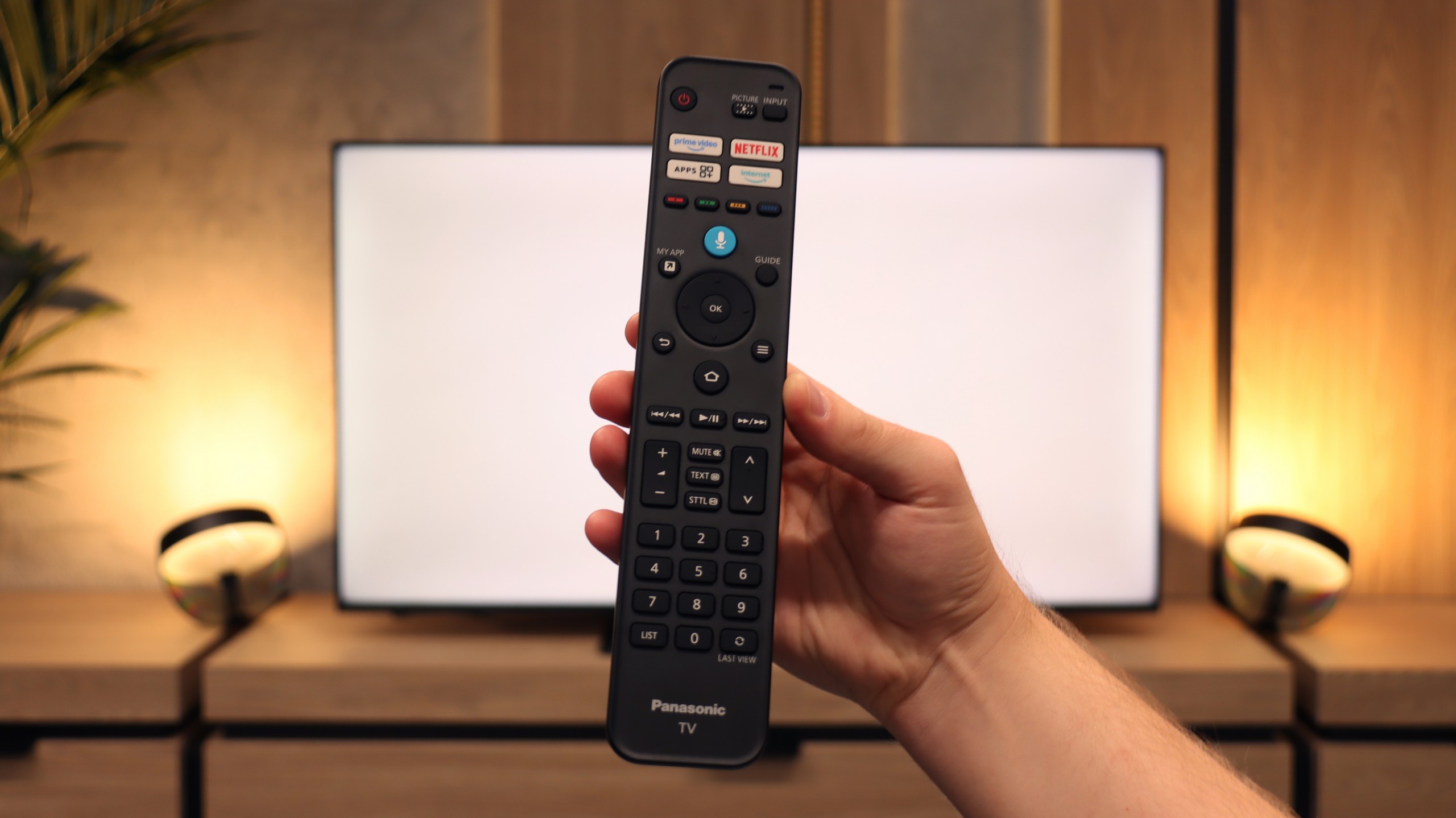
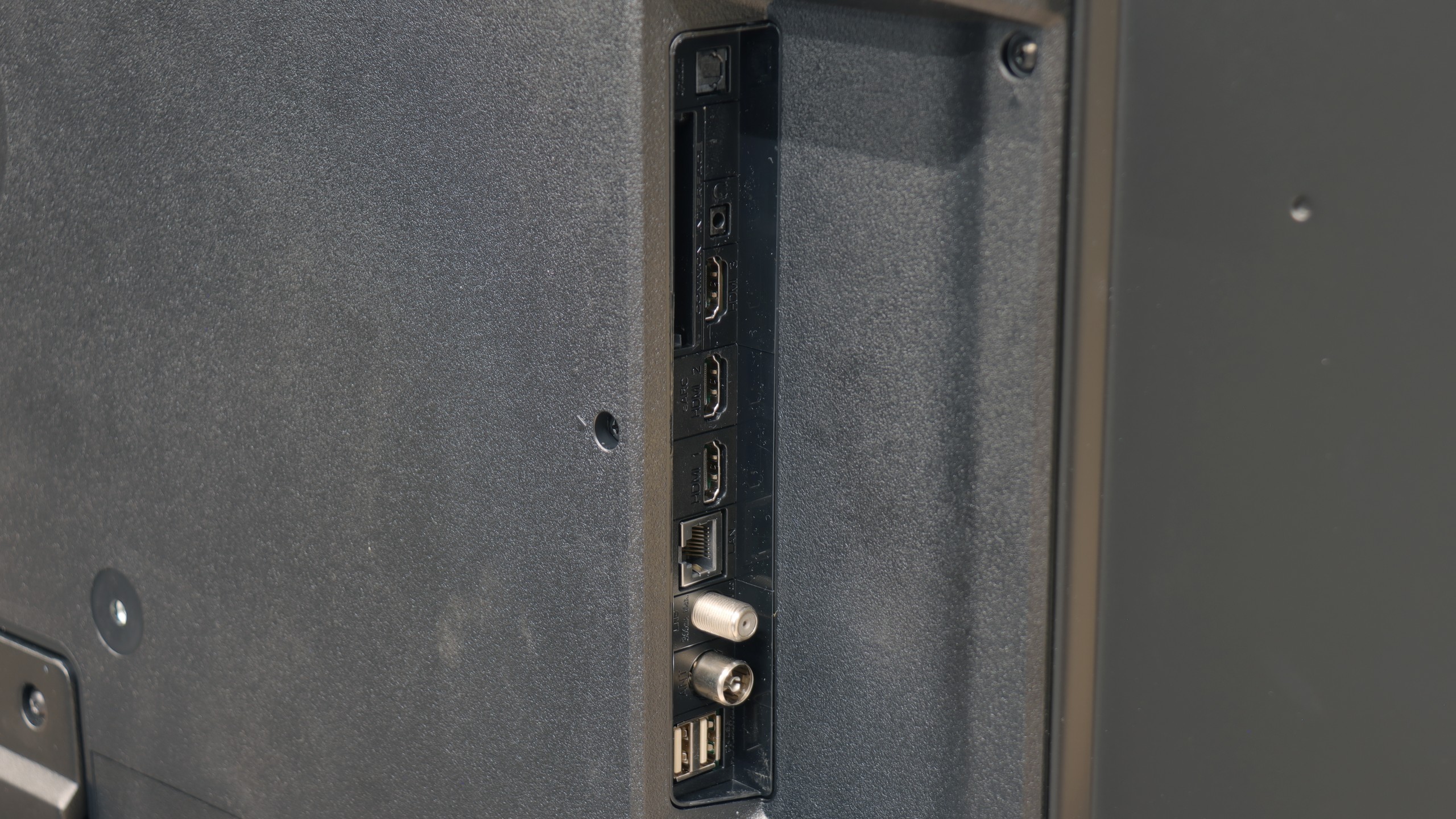
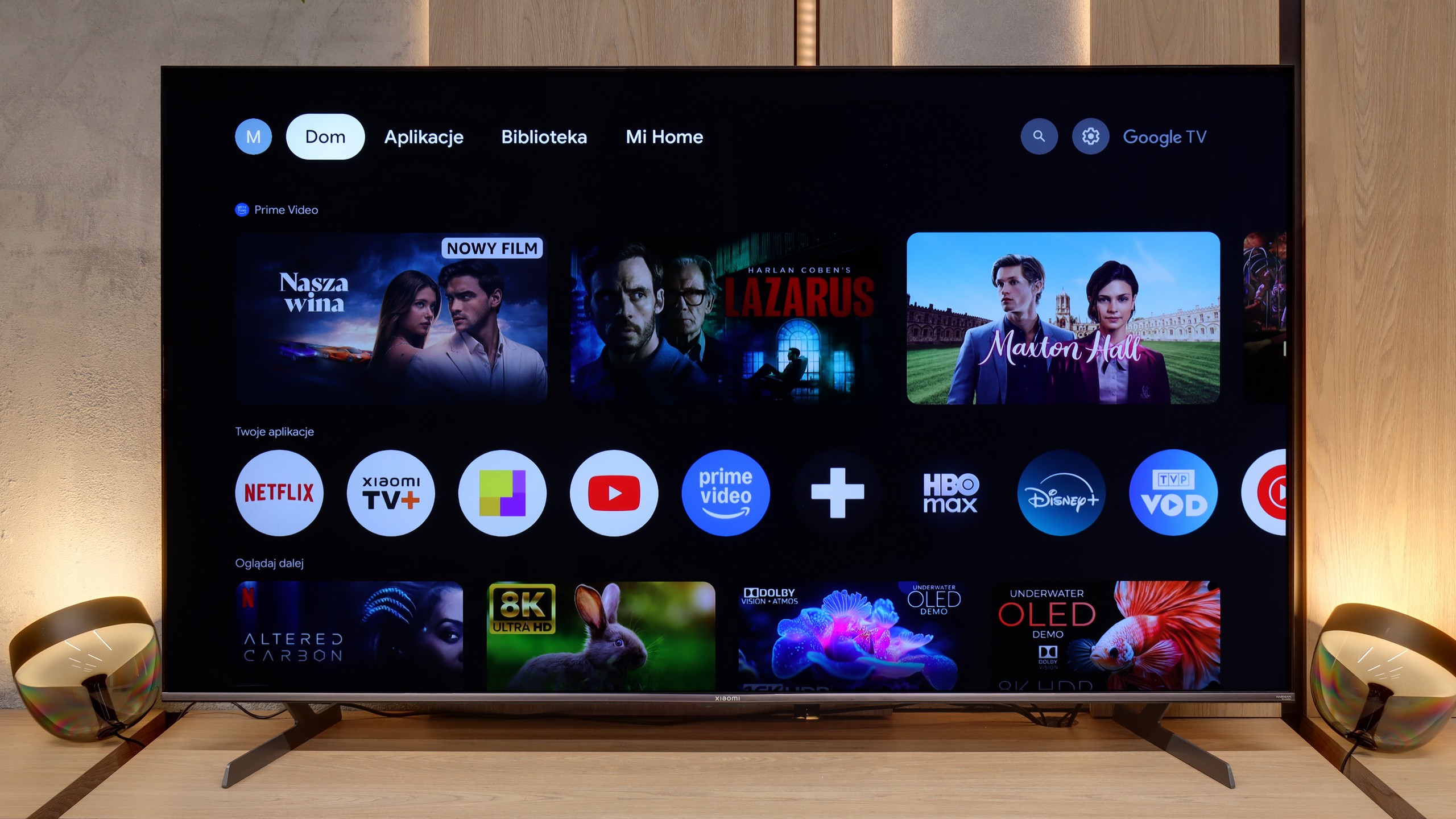
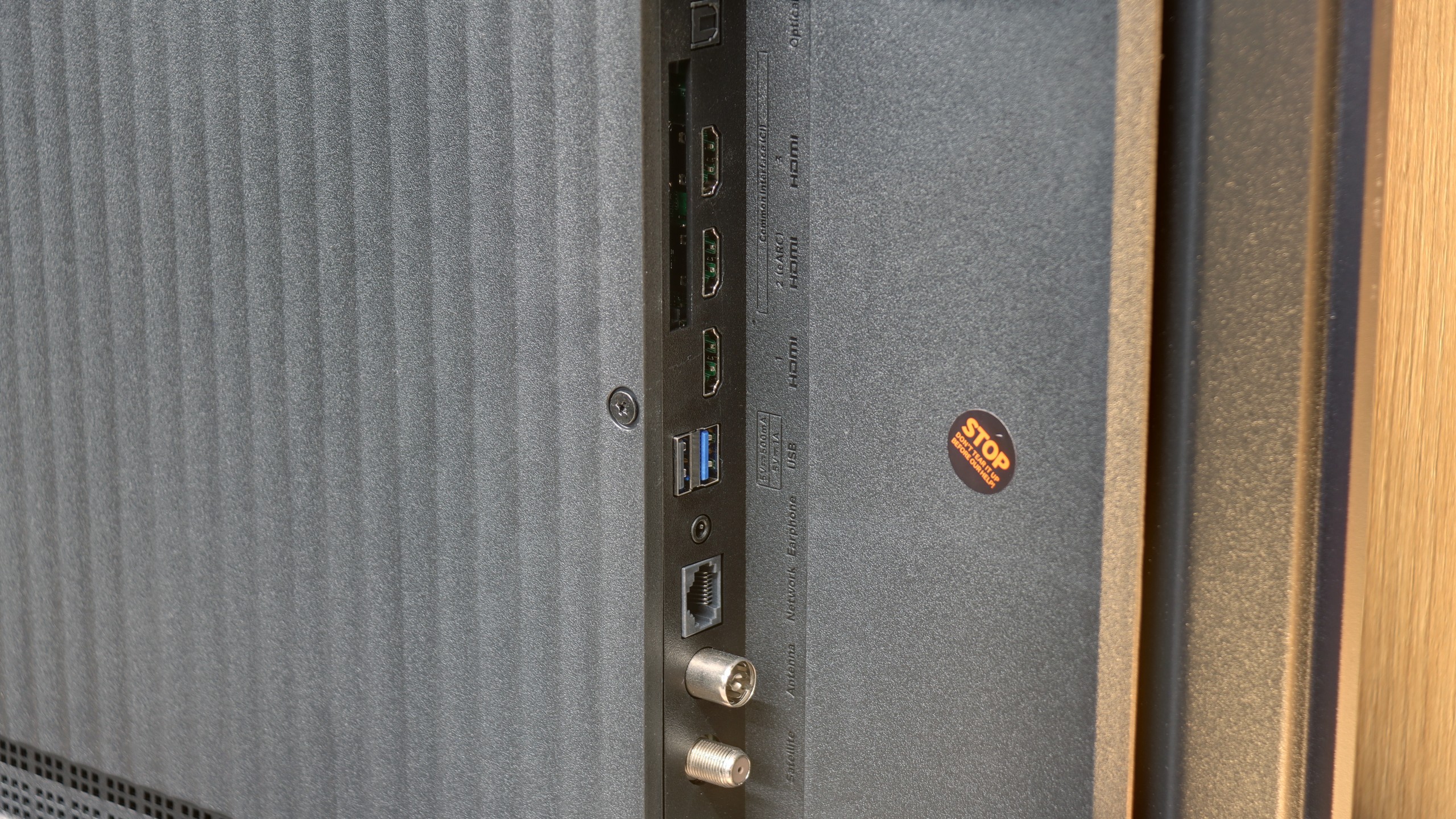

SmartTV: FireTV
The W85B runs on the Fire TV system and it must be said – it’s a significant step forward compared to Panasonic's previous proprietary solutions. We have support for AirPlay, screen mirroring, and even voice control via Alexa. It sounds modern and, in practice, it actually offers quite a lot of possibilities. The problem is that in Europe Fire TV still looks a bit like a “guest with luggage.” It works decently, but there are occasional micro-stutters, the interface doesn’t always respond as smoothly as we would like, and the menu can have awkward translations. It’s not yet at the level of the biggest players like Google TV or even Tizen, but it's still an improvement over what Panasonic had before. The worst part of it all is that the Fire TV app library is quite modest, and that is its biggest drawback.
Classic TV Functions
In terms of typical TV features, it’s quite good – we have a classic remote with a full numeric keypad, a clear EPG guide, and the ability to record programs from the built-in tuner onto an external USB drive (e.g. a flash drive). The downside is the lack of an option to schedule recordings in advance – you can record “here and now,” but can't set recordings for later.
Operating System (Google TV)
An enormous advantage of the Xiaomi S Pro 2026 is undoubtedly the presence of the Google TV system. This gives us access to a gigantic library of apps – we can literally find everything here, from leading VOD platforms to niche players. The system also offers plenty of useful features, such as built-in Chromecast, support for AirPlay and Screen Mirroring, and efficiently functioning voice search. The Google TV system itself is great, but Xiaomi's implementation needs a little adjustment. During our tests, it occasionally experienced a proverbial "breathlessness." Animations would stutter slightly, and the response to commands was not immediate. This is certainly not the level of fluidity we know from top-tier, significantly more expensive models equipped with more powerful processors.
TV Features and Connectivity
So how does the S Pro 2026 perform as a "regular" television? Unfortunately, we have less good news here. In terms of traditional television viewing, we can mainly praise this model for having a convenient remote with a numeric keypad – which (surprisingly) is no longer a standard today. However, this is where the conveniences end. We won’t find either USB recording functionality (PVR) or PiP (Picture-in-Picture) options. On the plus side, we acknowledge the extensive Bluetooth connectivity options. We were able to connect external devices to the TV without any problems, such as wireless headphones, a keyboard, or a mouse, which significantly eases operation.
Playing files from USB
3.1/10
6.8/10
Supported photo formats:
Maximum photo resolution:
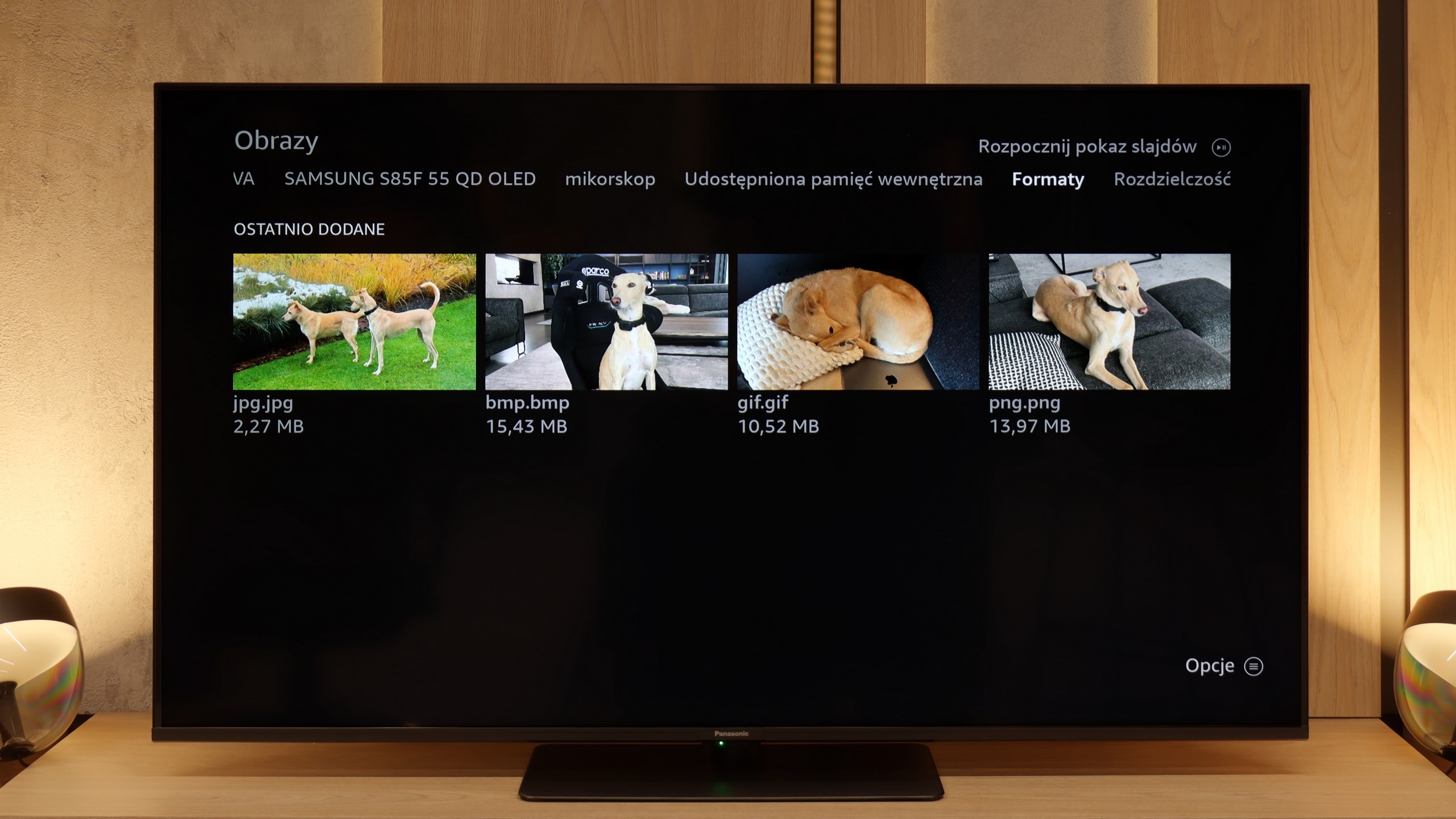

The biggest pain point of the built-in player with Fire TV is the lack of support for external subtitle files. If you have your own movie library and use text files, you simply won't be able to display them on this TV. The player itself handles basic video formats, but if someone wants to fully utilise files from USB, they'll probably end up installing an additional app from the store (e.g., VLC).
The built-in, default media player in the Xiaomi S Pro 2026 is – considering the capabilities of the Google TV system – simply poor. Its biggest disadvantage is that it does not support characters beyond those from the standard alphabet. Consequently, it does not display, among other things, Polish fonts in subtitles or file names. Fortunately, as we mentioned earlier, the heart of the television is Google TV. This system allows for the quick installation of an external player, which is significantly better, such as VLC or Kodi. For this television, we recommend installing an alternative player immediately after the first startup.
Apps
7.6/10
9.6/10














































Sound
5.8/10
7.1/10
- Maximum volume87dB82dB
- Dolby Digital Plus 7.1
- Dolby True HD 7.1
- Dolby Atmos in Dolby Digital Plus (JOC)
- Dolby Atmos in Dolby True HD
- DTS:X in DTS-HD MA
- DTS-HD Master Audio
Here the Panasonic W85B unfortunately has nothing to brag about. The speakers sound flat and quite “plasticky”, so there’s definitely no cinematic experience to be had here. There's no depth, no clear bass – just basic sound that’s simply meant to “be”. It's a pity because we thought the external subwoofer used here would actually make a difference. Unfortunately, we were mistaken. The only advantage is that the TV can play really loud. This may appeal to older users who often need higher volume to comfortably watch programs or news. For everyday TV watching, it’s sufficient, but if someone is thinking about movies and games – an additional soundbar or audio system is basically a requirement.
We have to admit that the S Pro 2026 really surprised us in a positive way. The television is equipped with a 30W speaker system, which, for its class, sounds really very good. There’s even a perceivable hint of bass, and the mids and highs are quite well balanced. Of course, all this is within the capabilities of the television's speakers, but it’s a level we didn't expect from such a relatively cheap model. A huge plus is also the support for top audio technologies. The television is able to decode not only the very popular Dolby Atmos format but also the recently rather rare DTS:X, which we mainly find on Blu-ray discs.
Sound Quality Test
Acoustic Measurements
87dBC (Max)
75dBC
82dBC (Max)
75dBC
